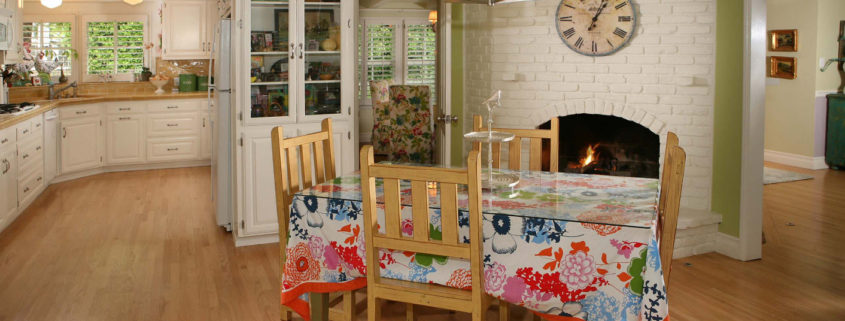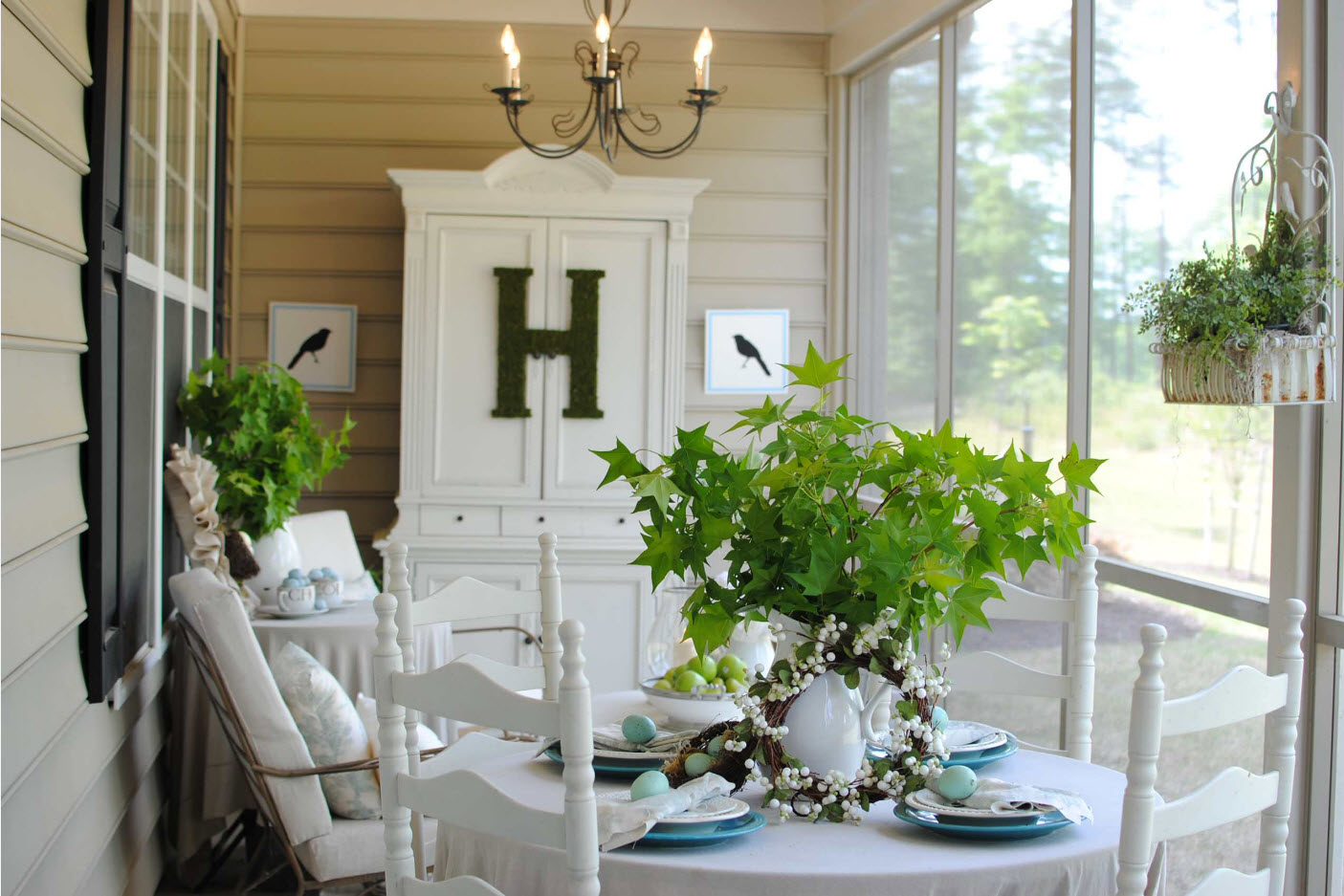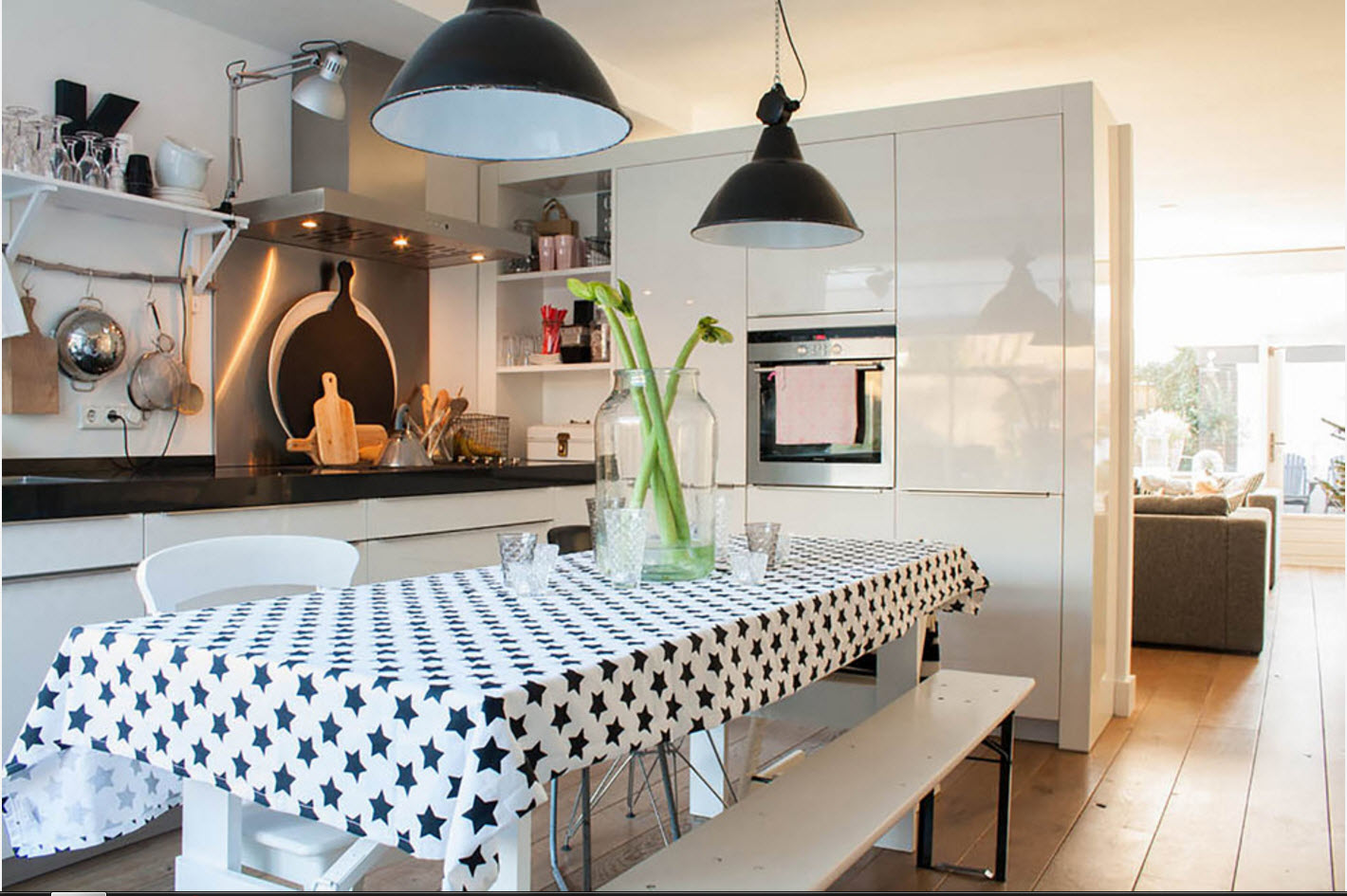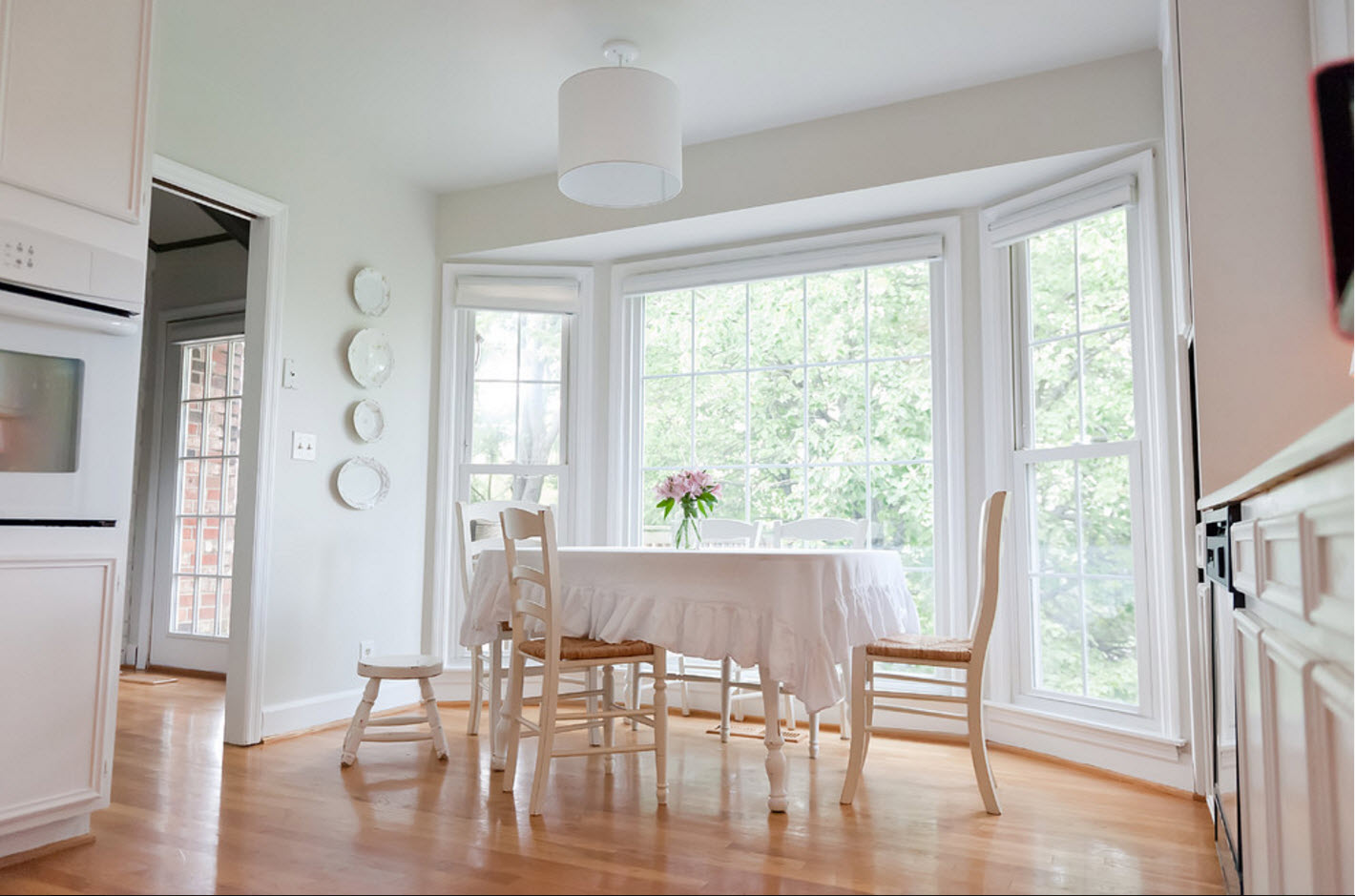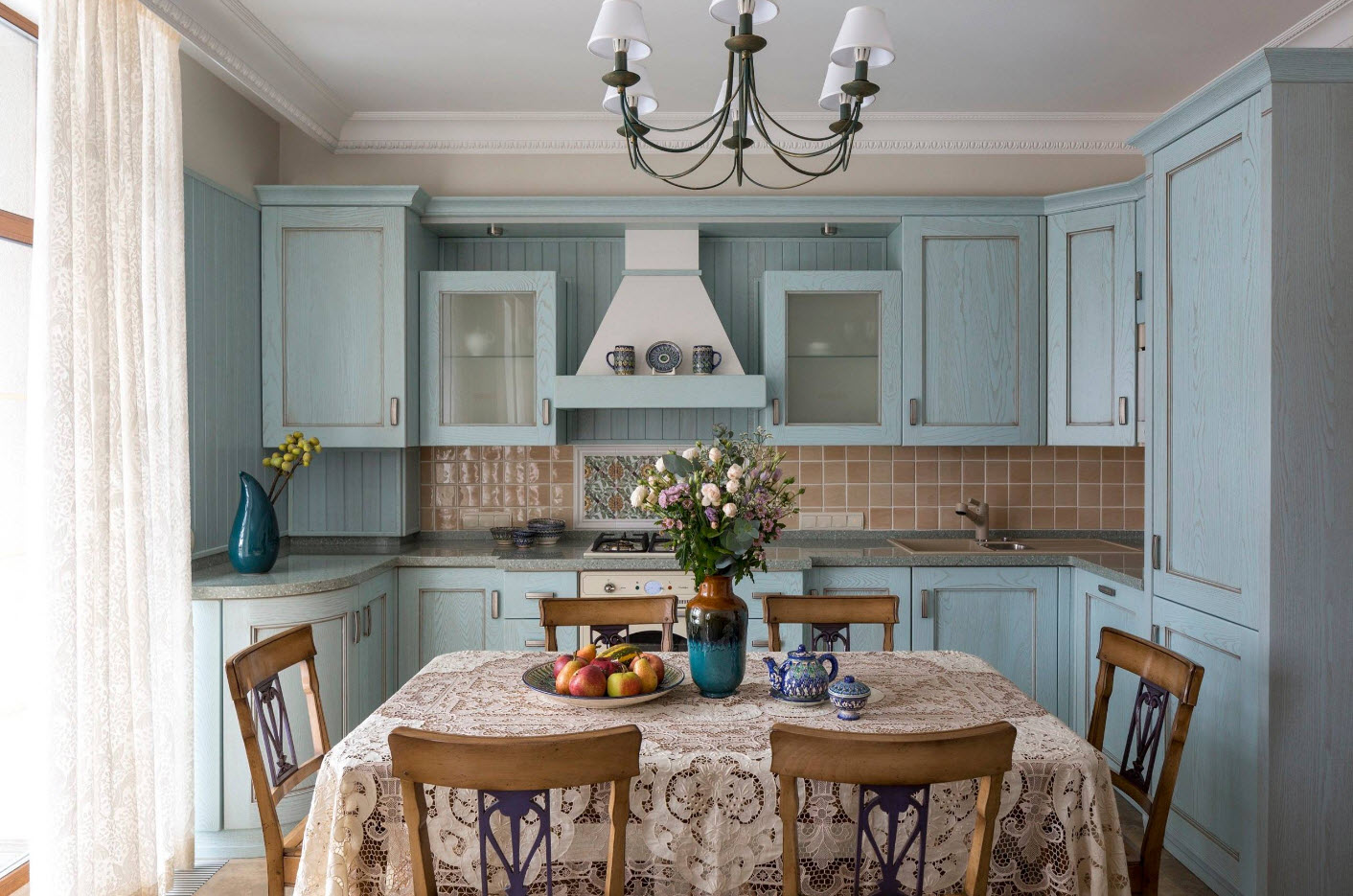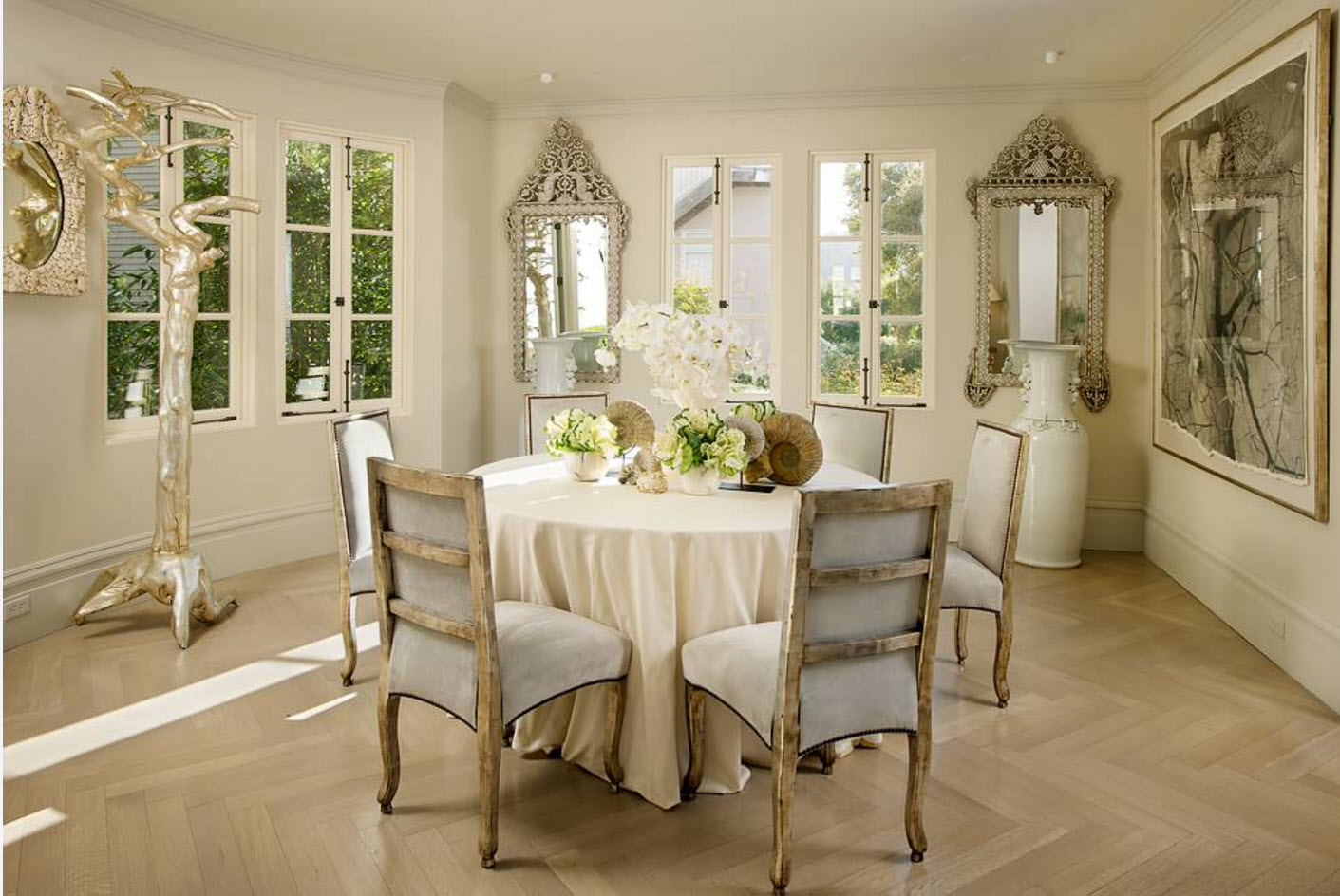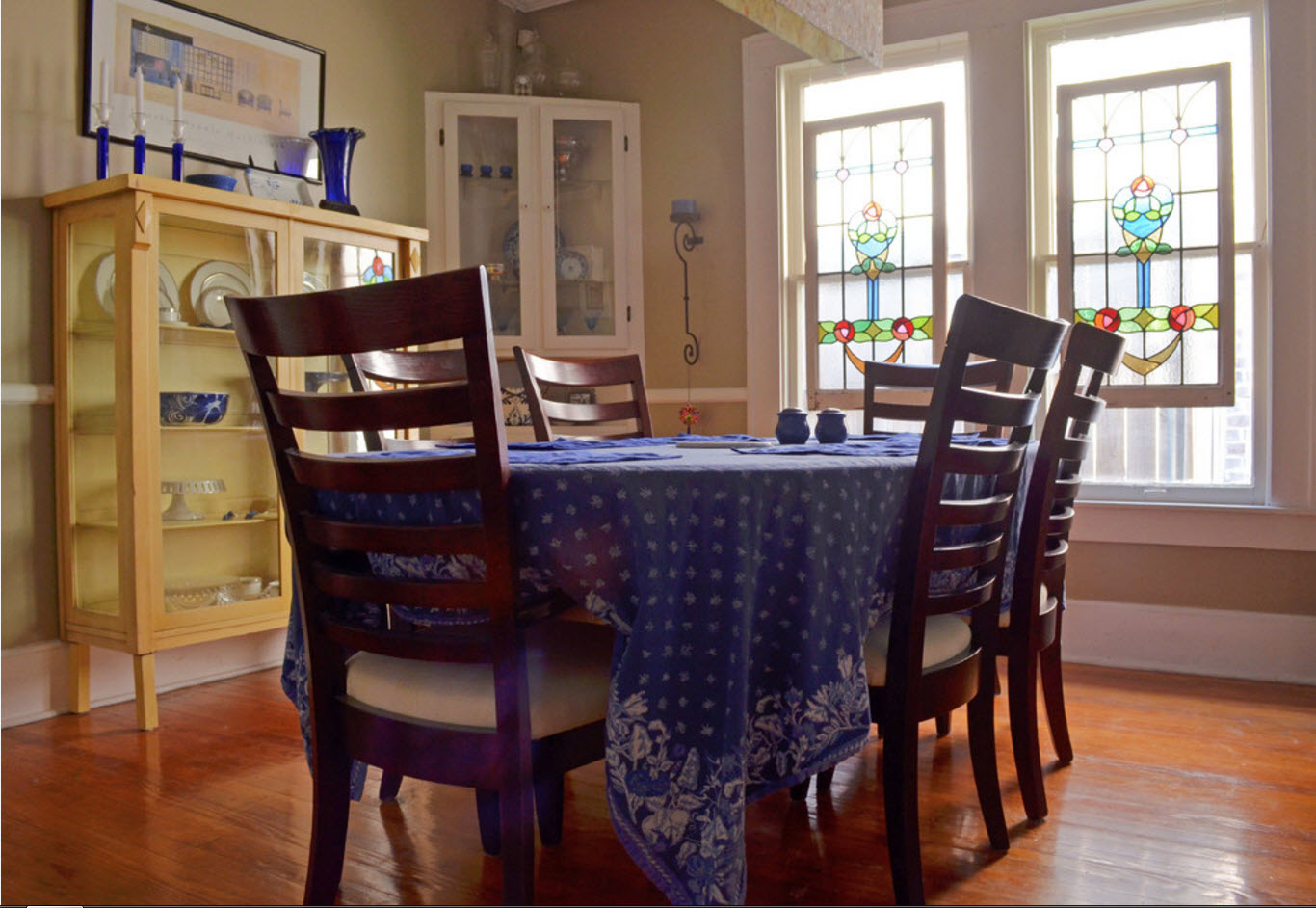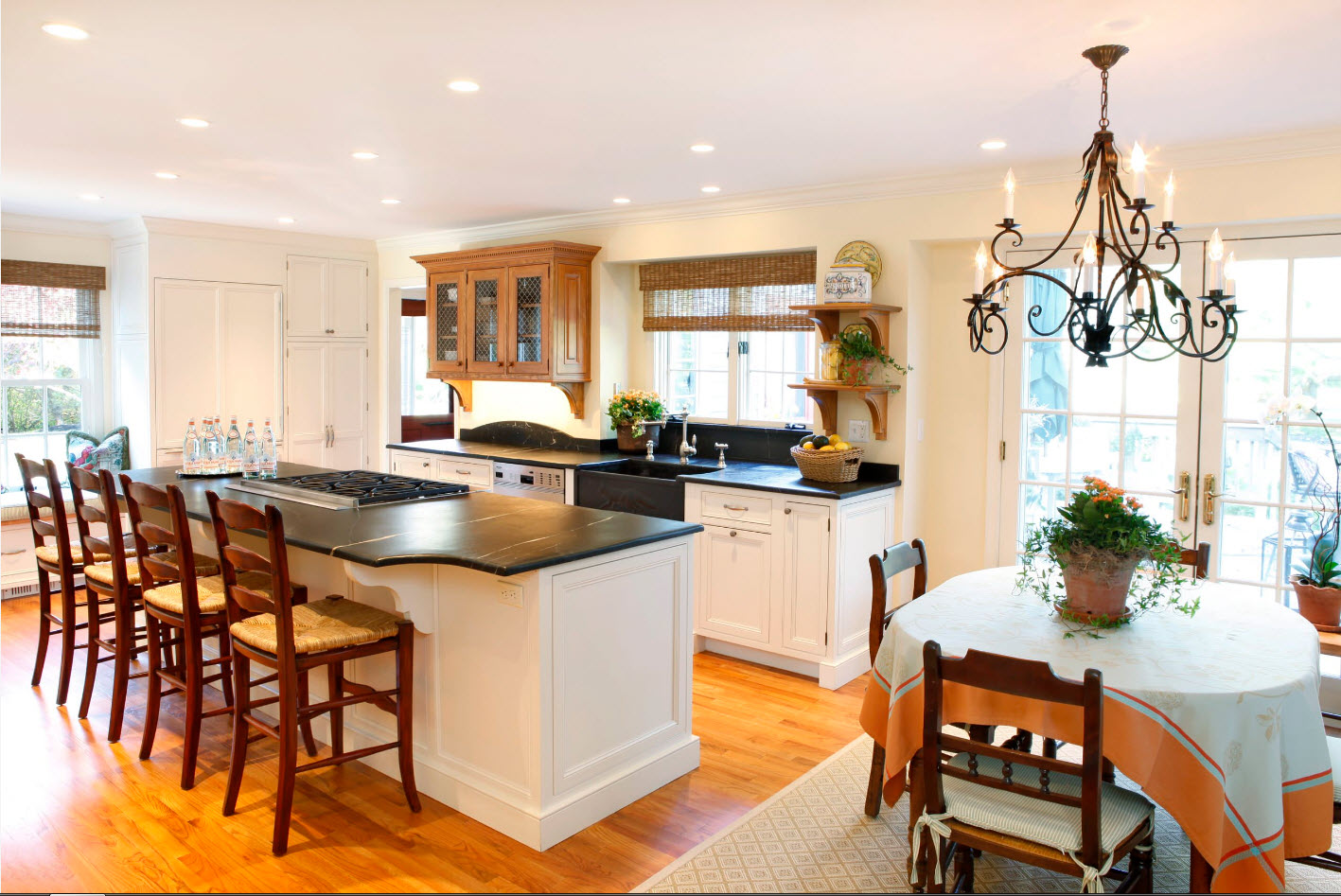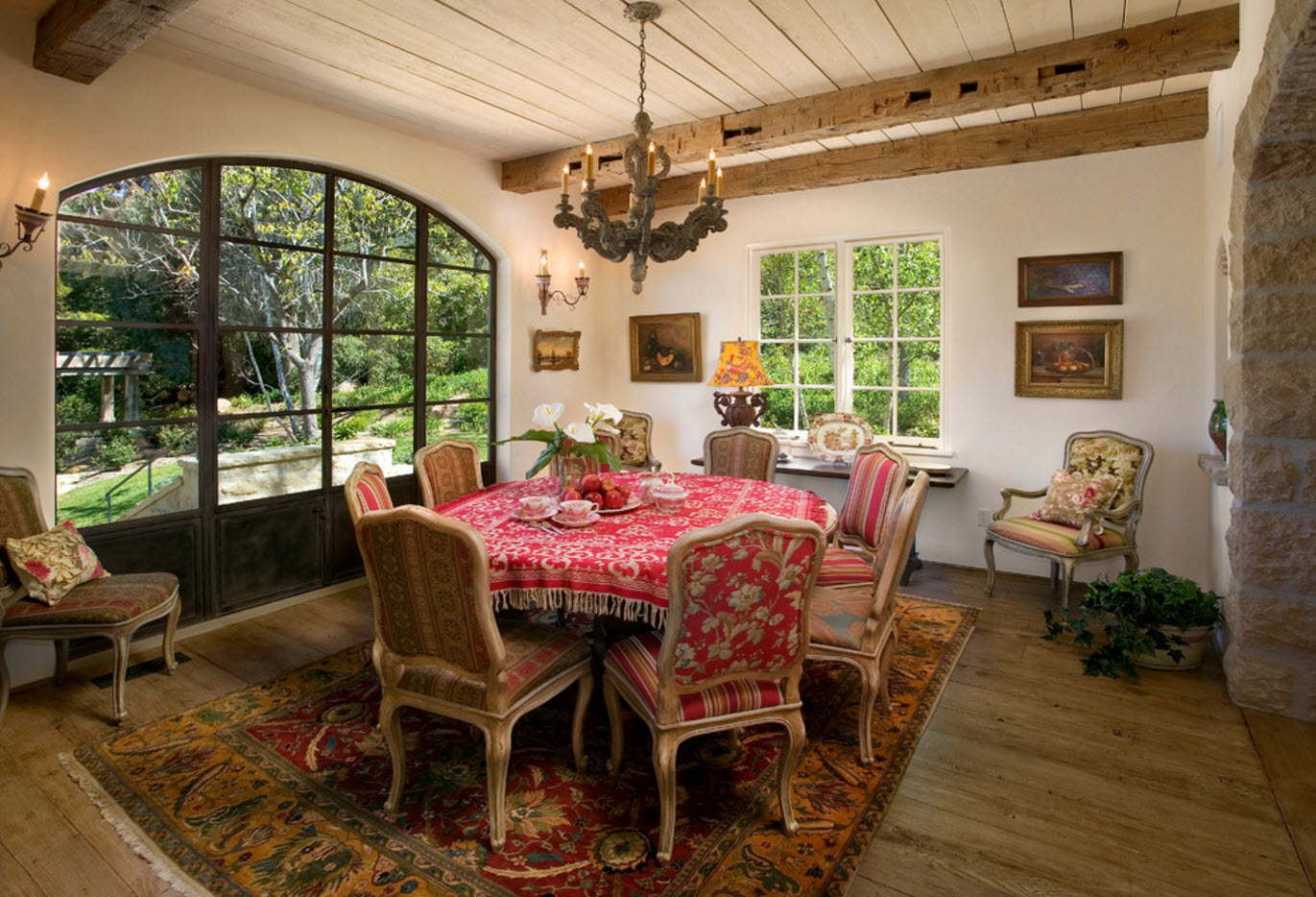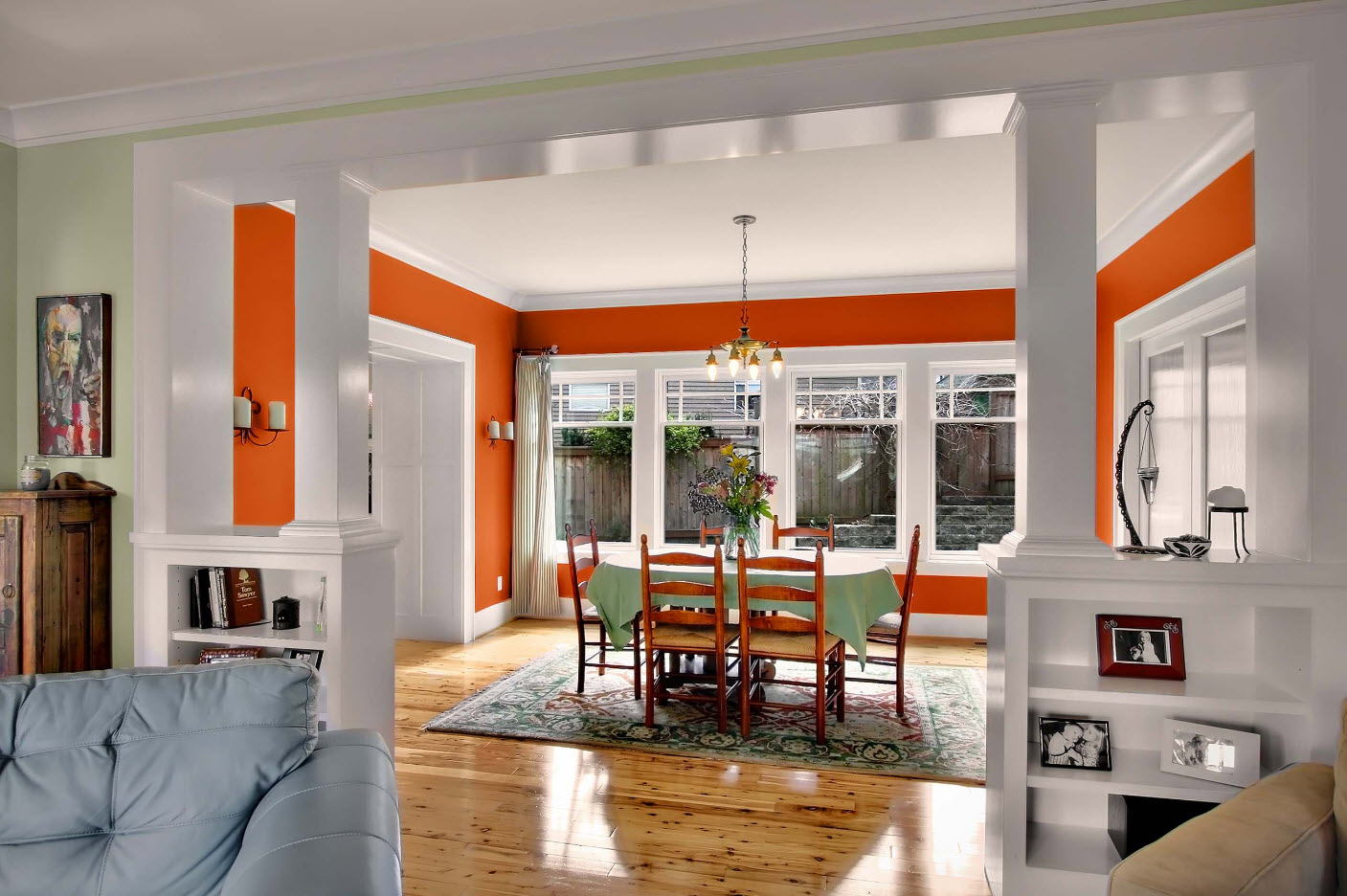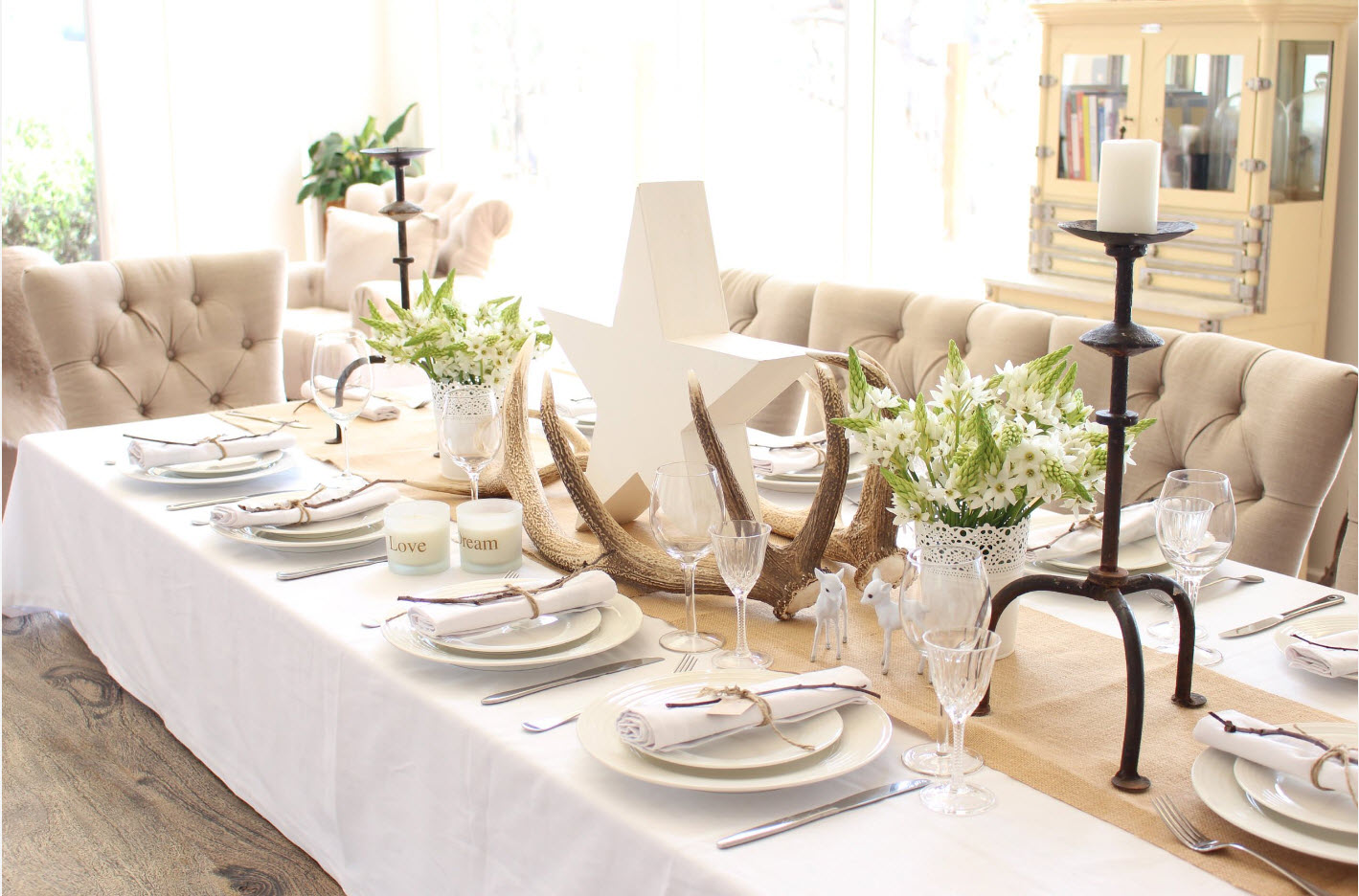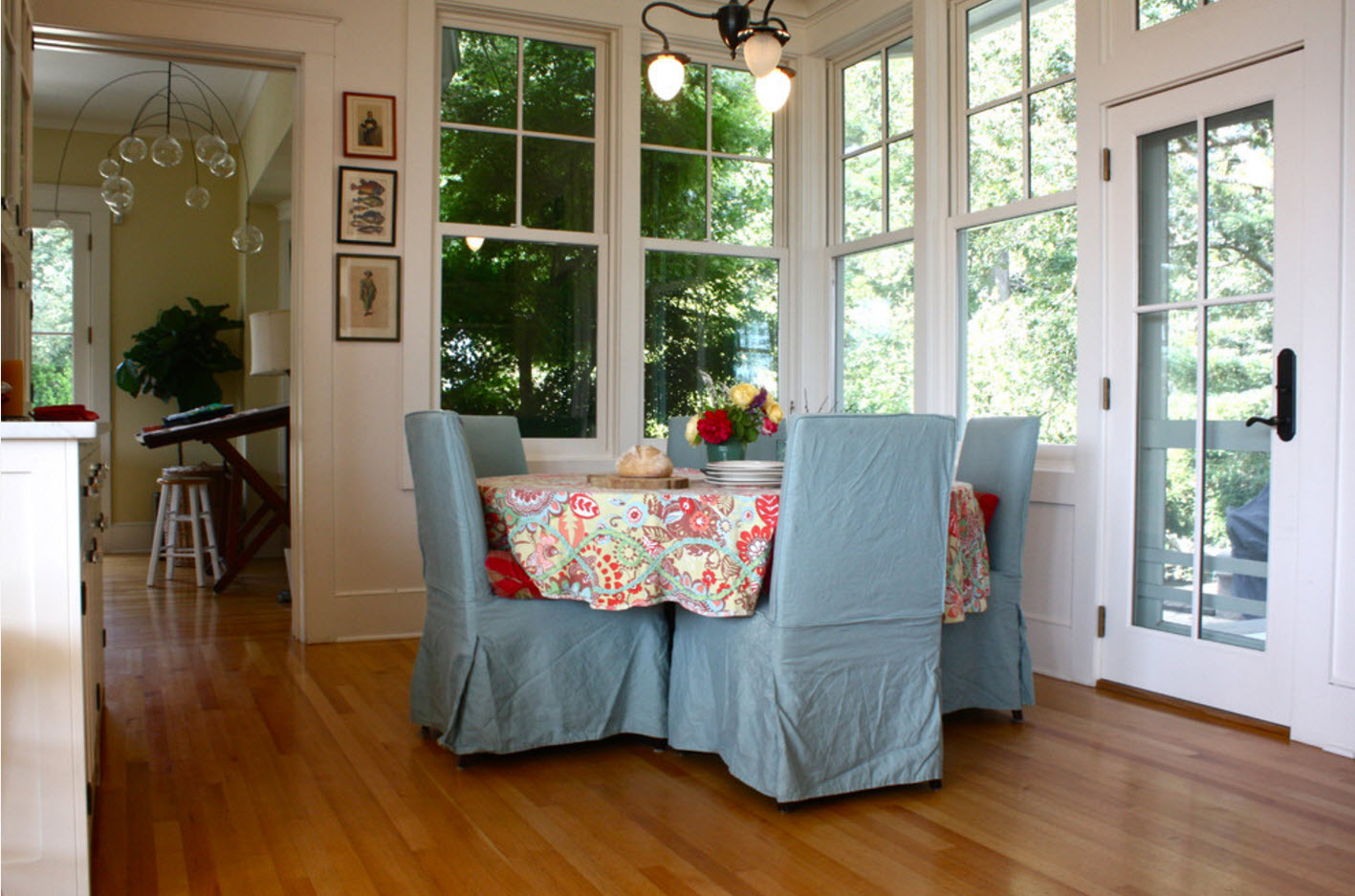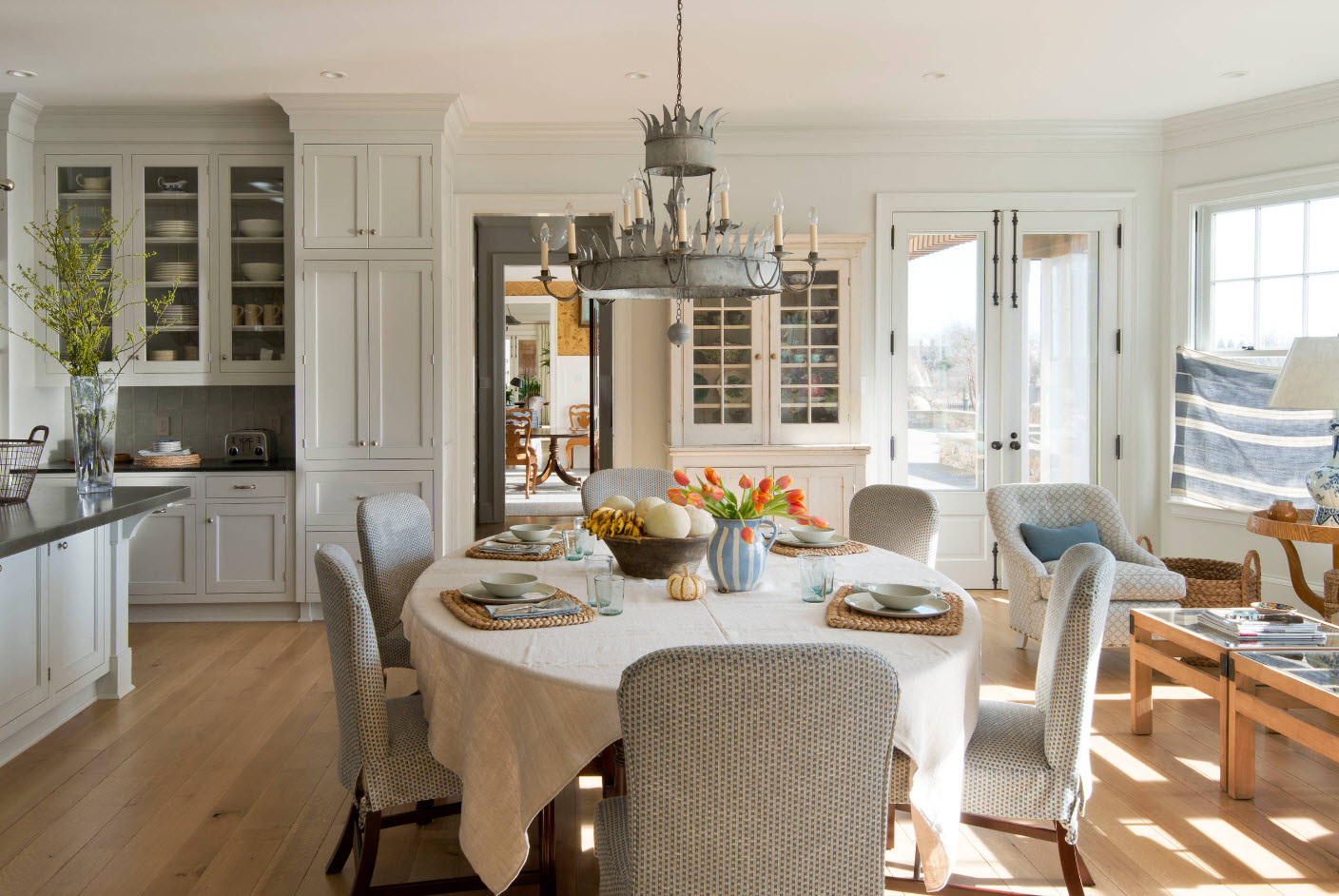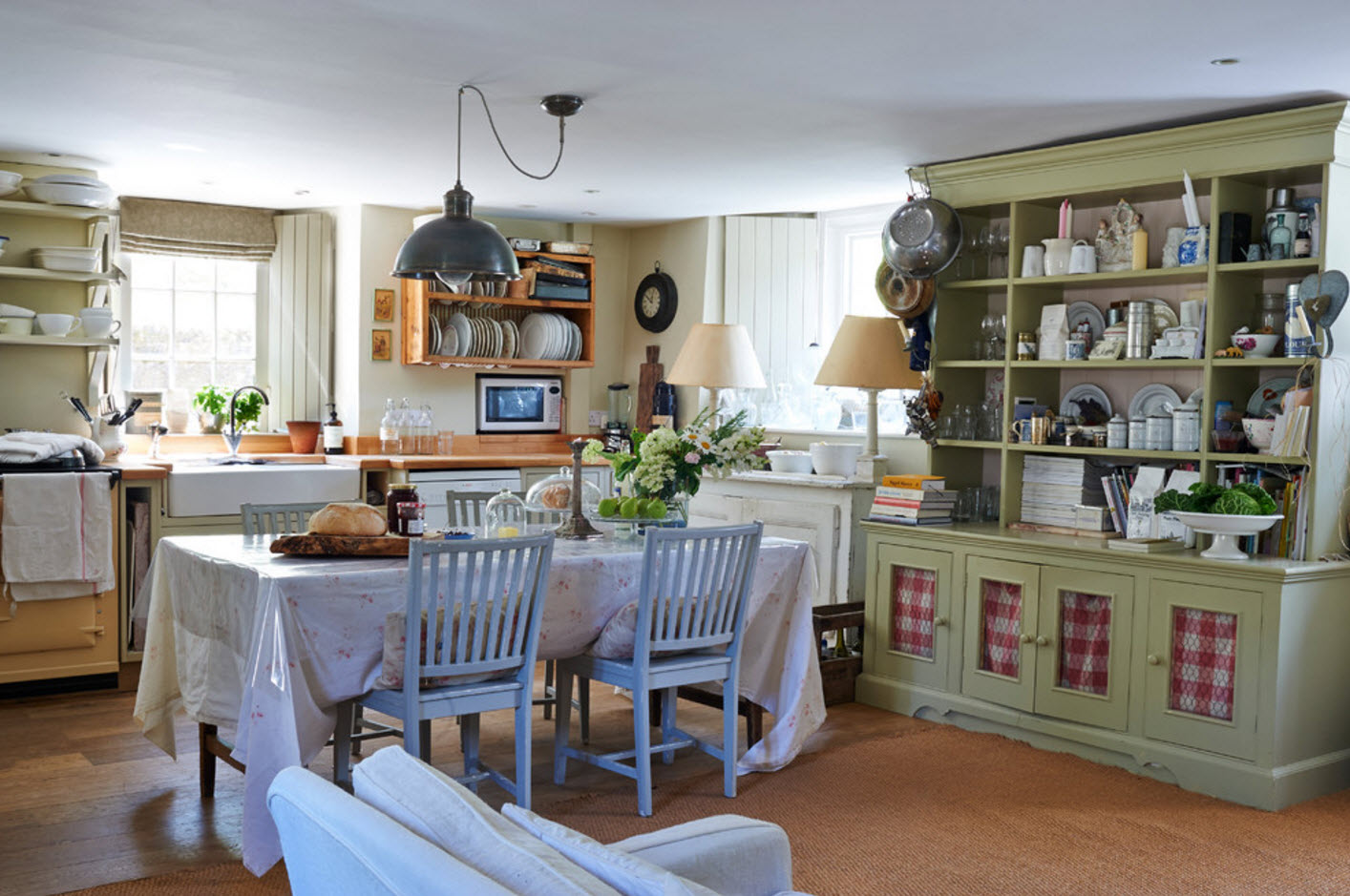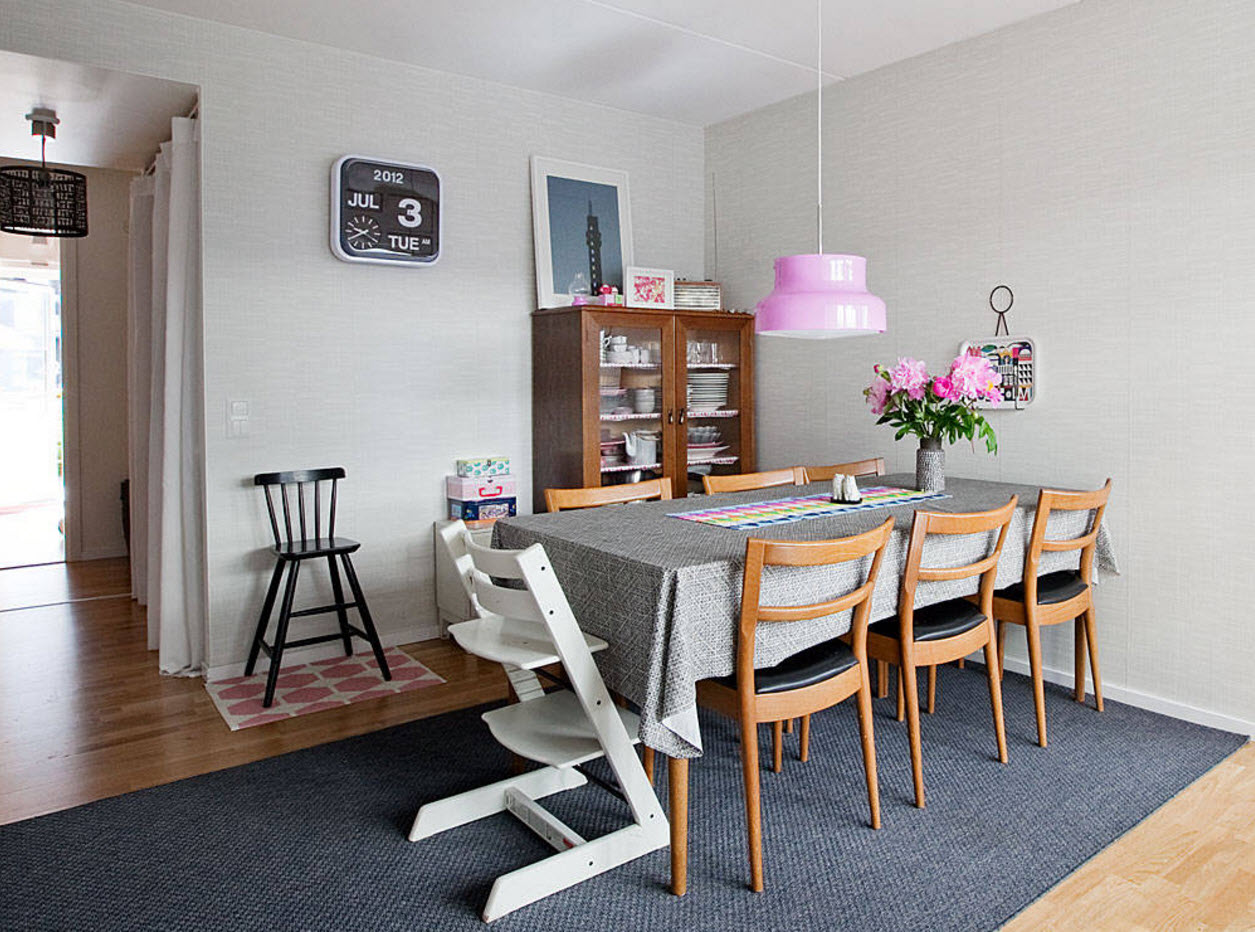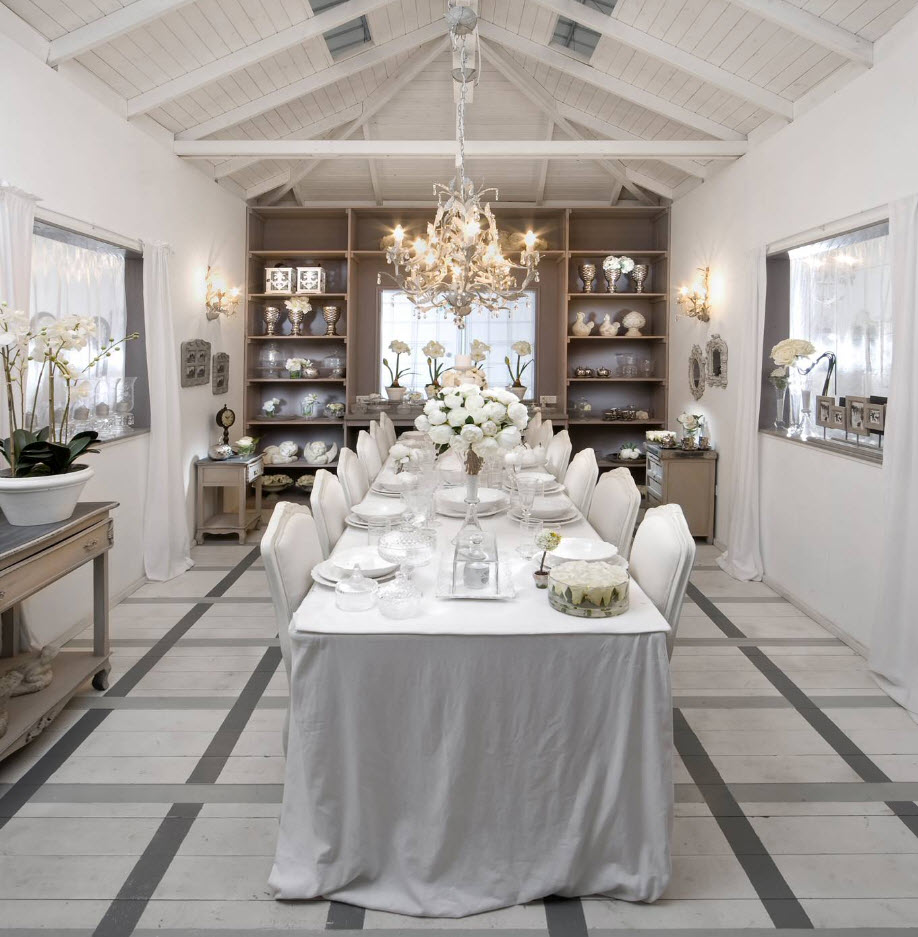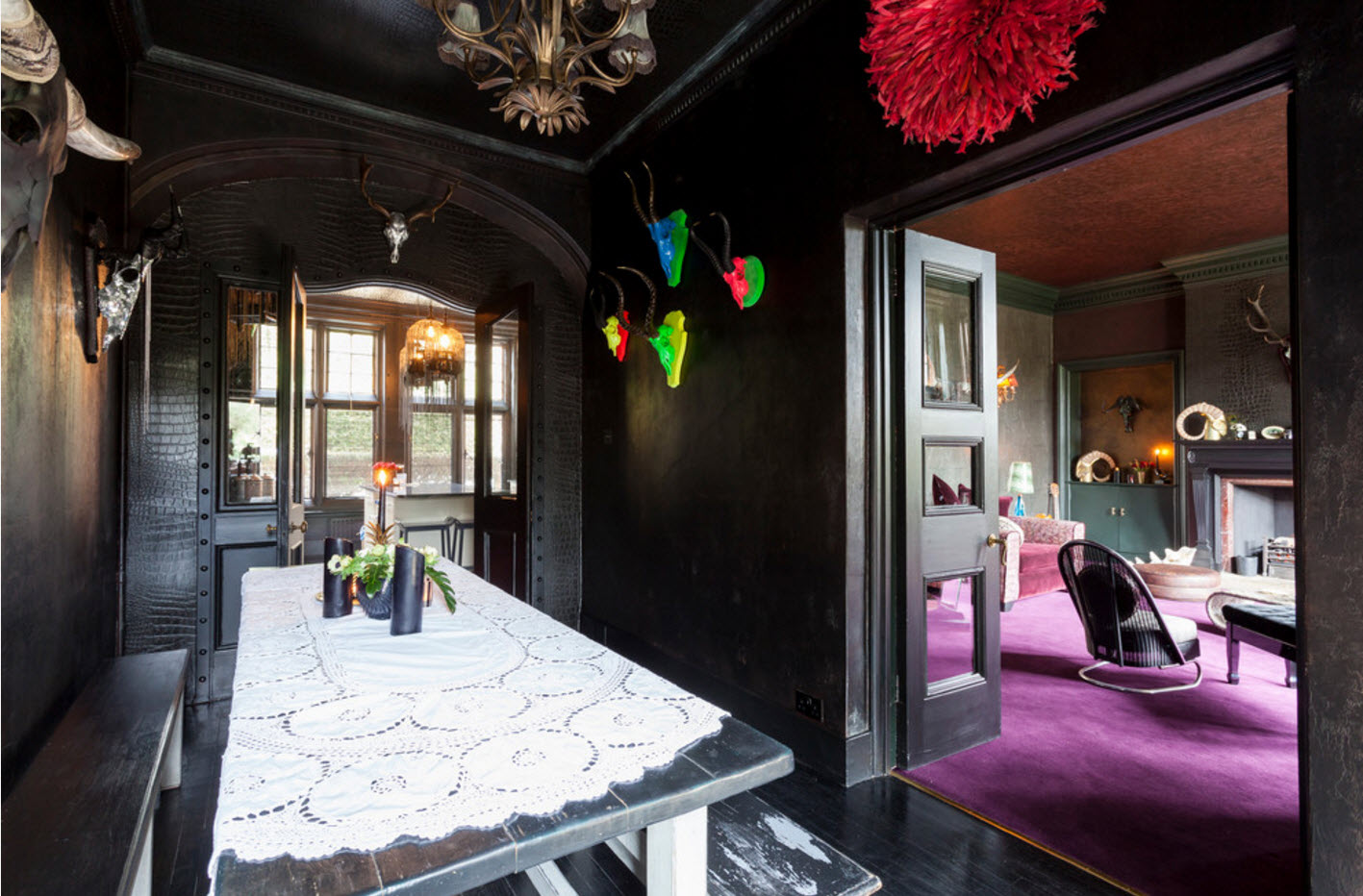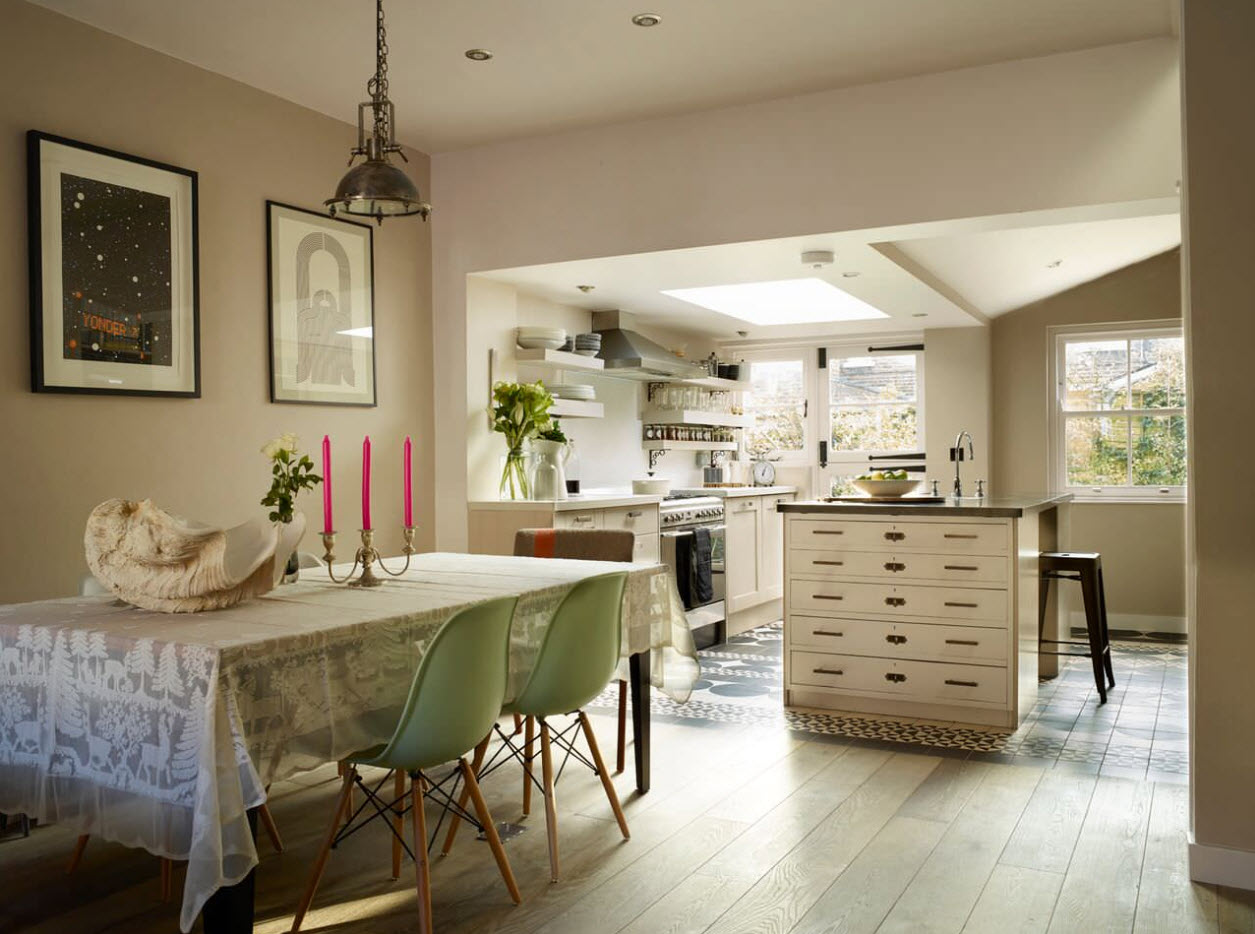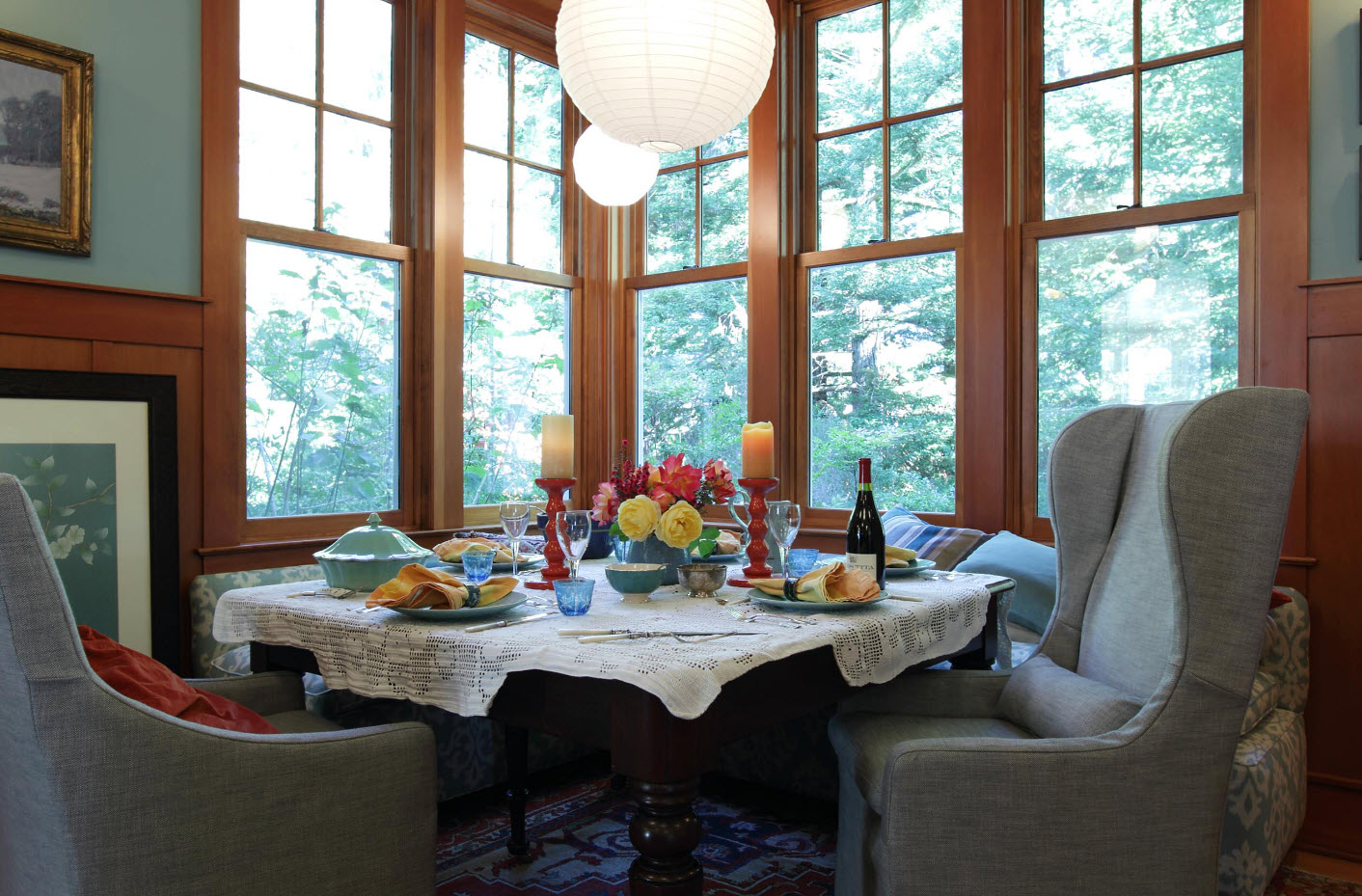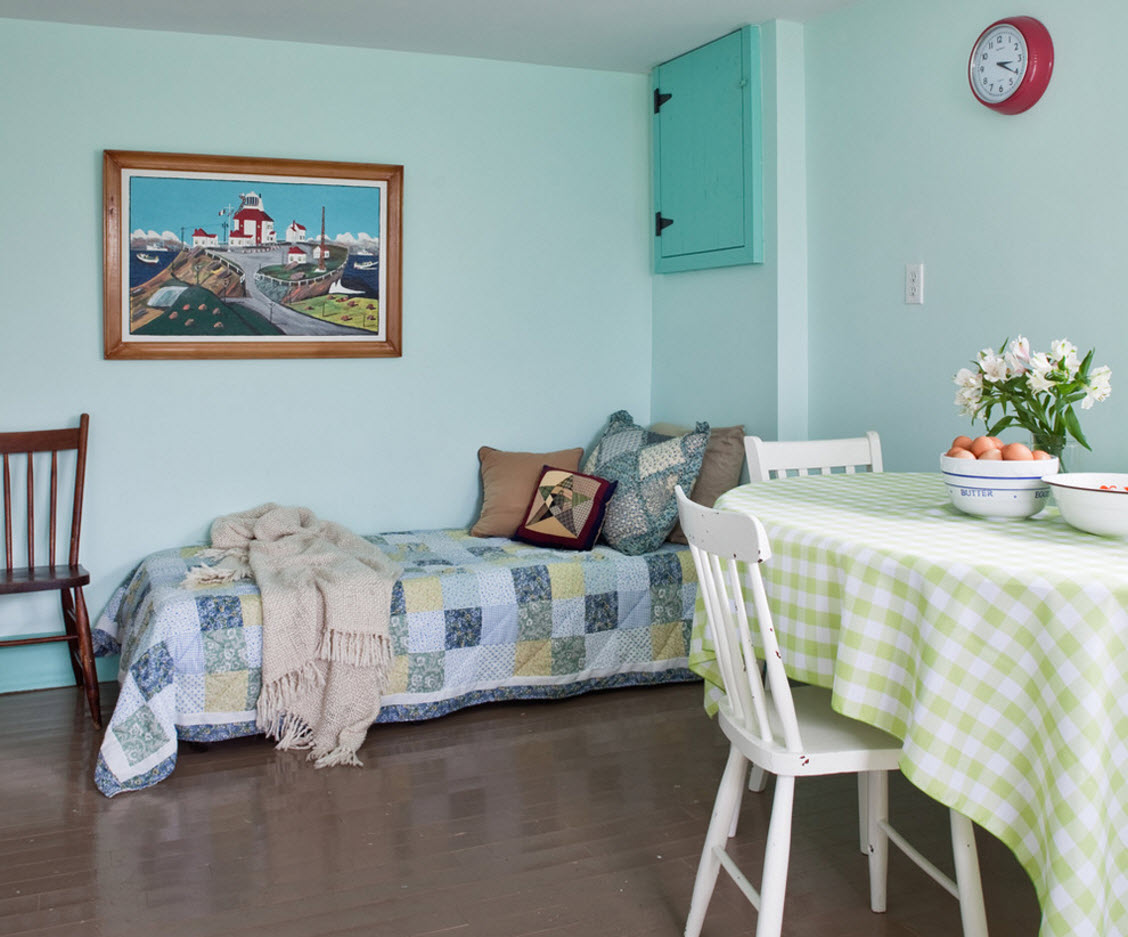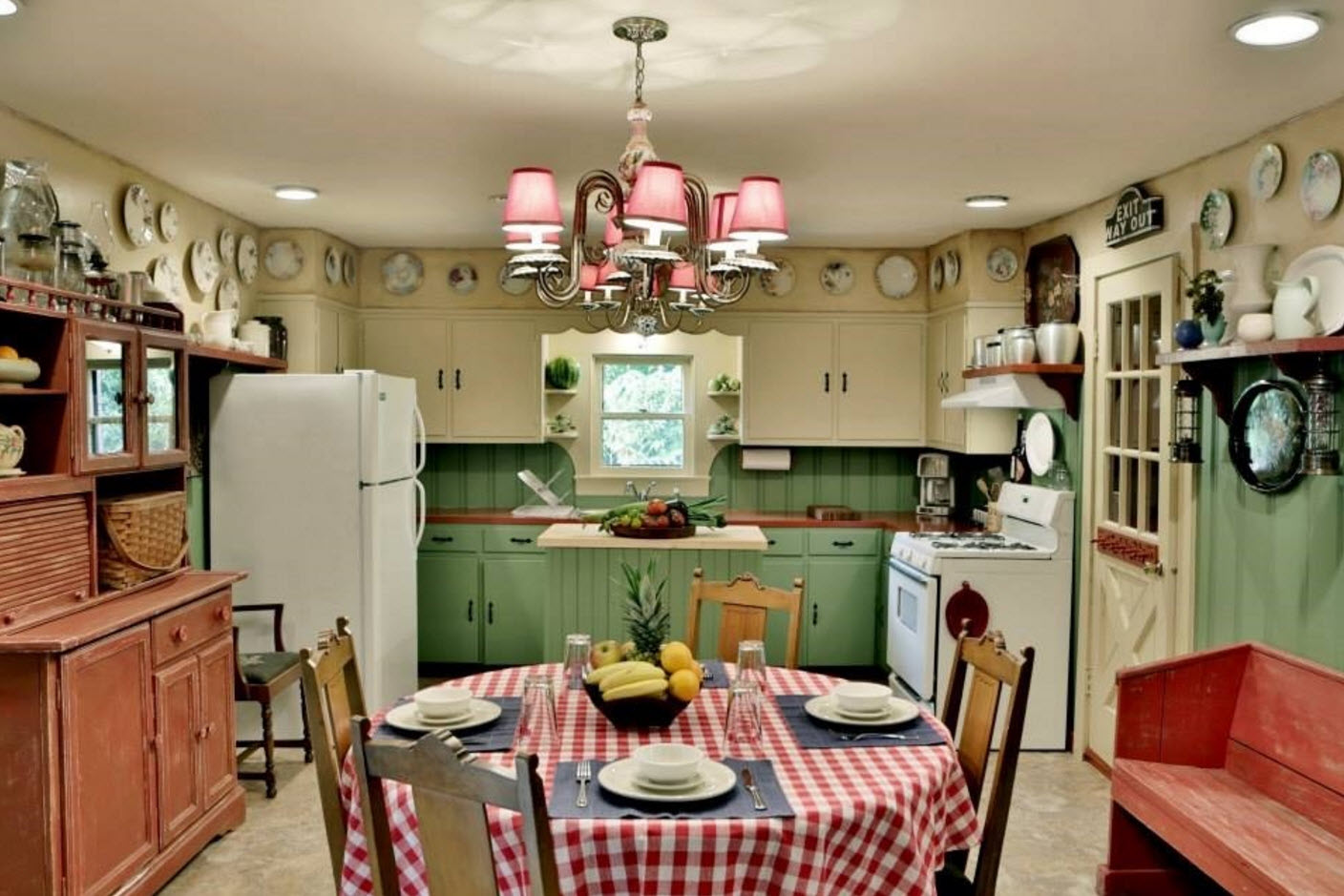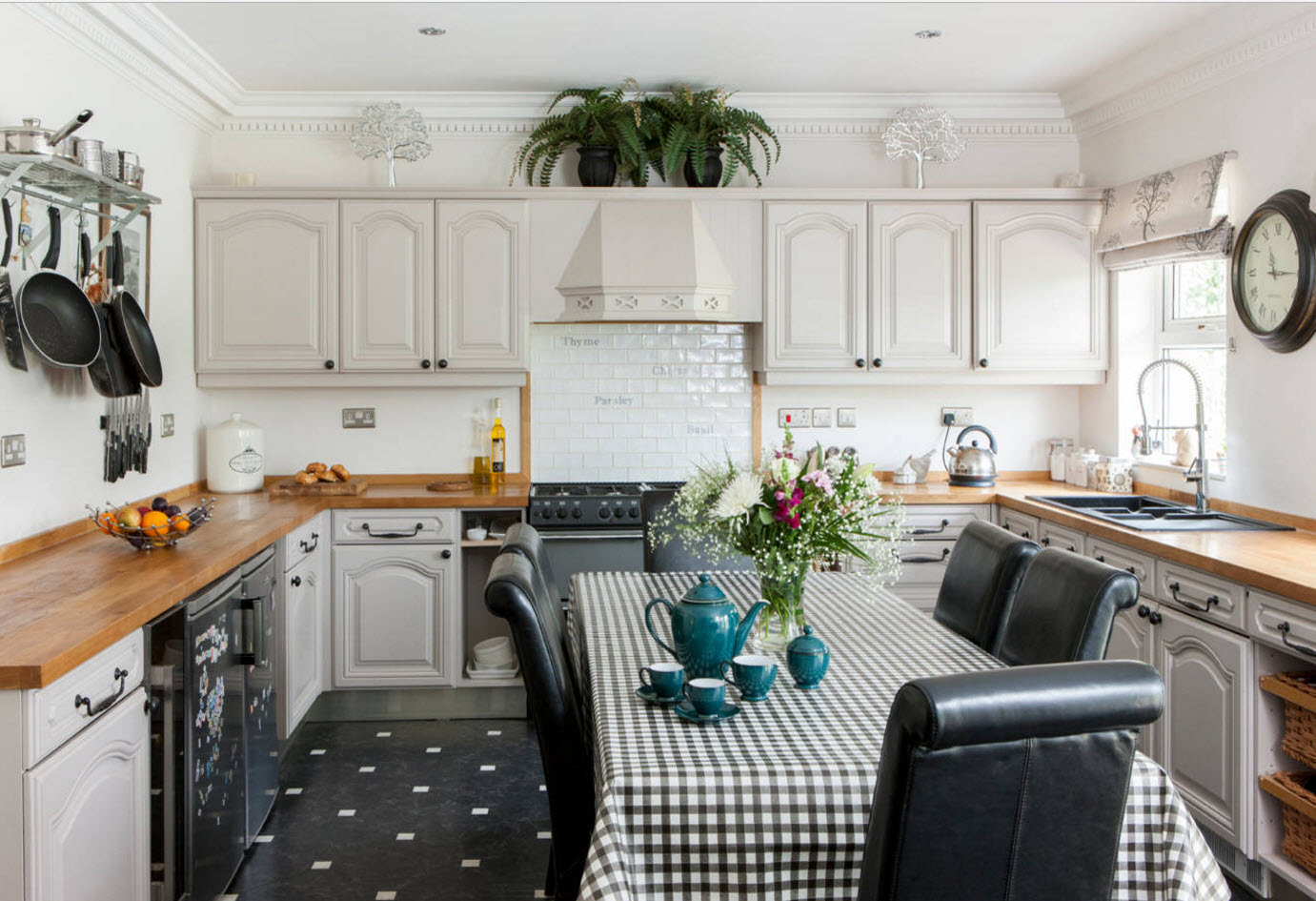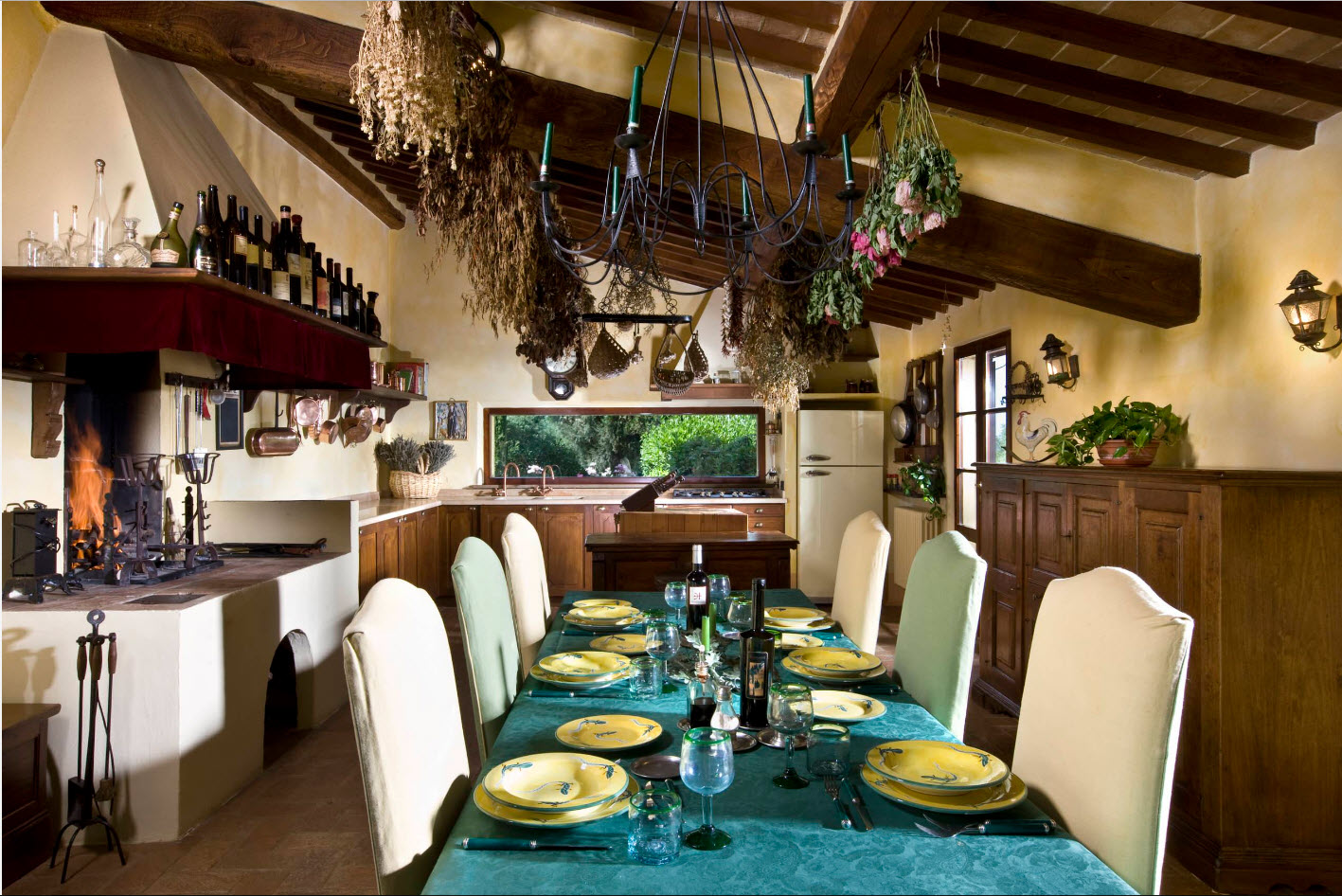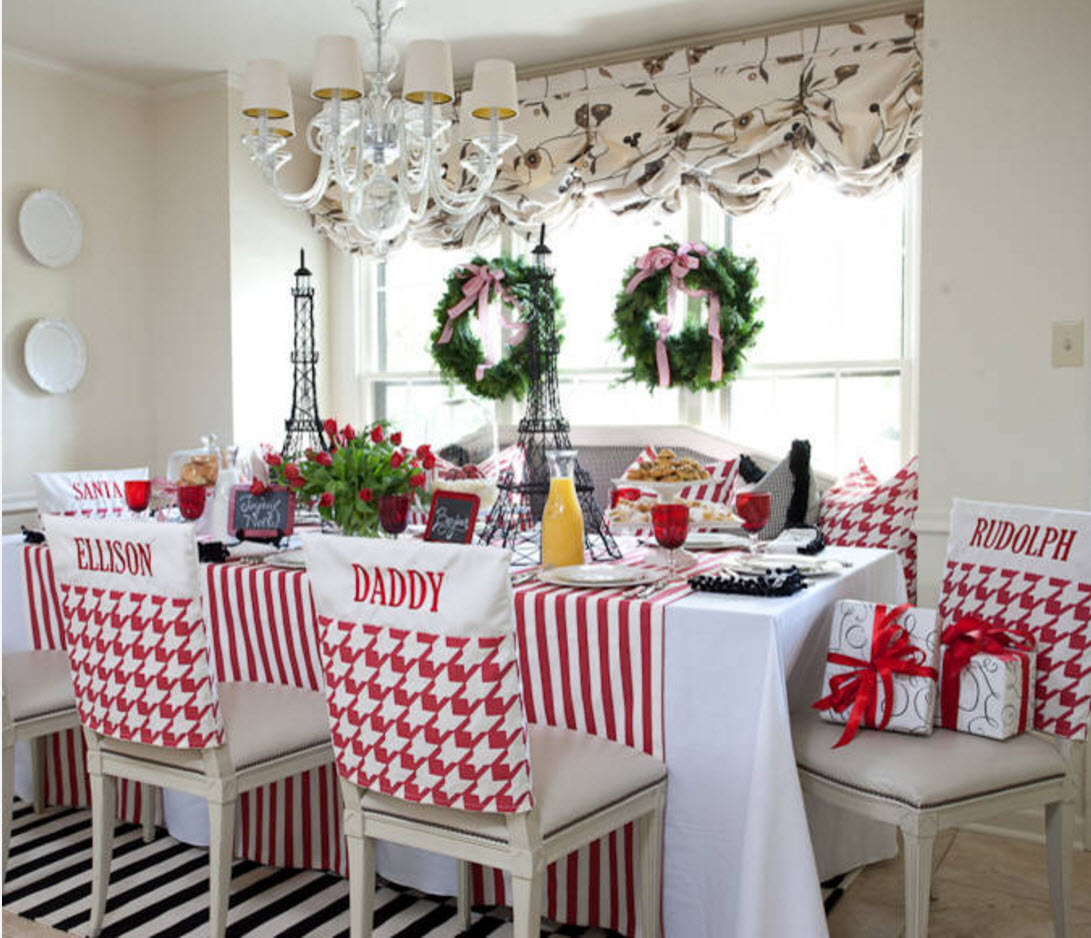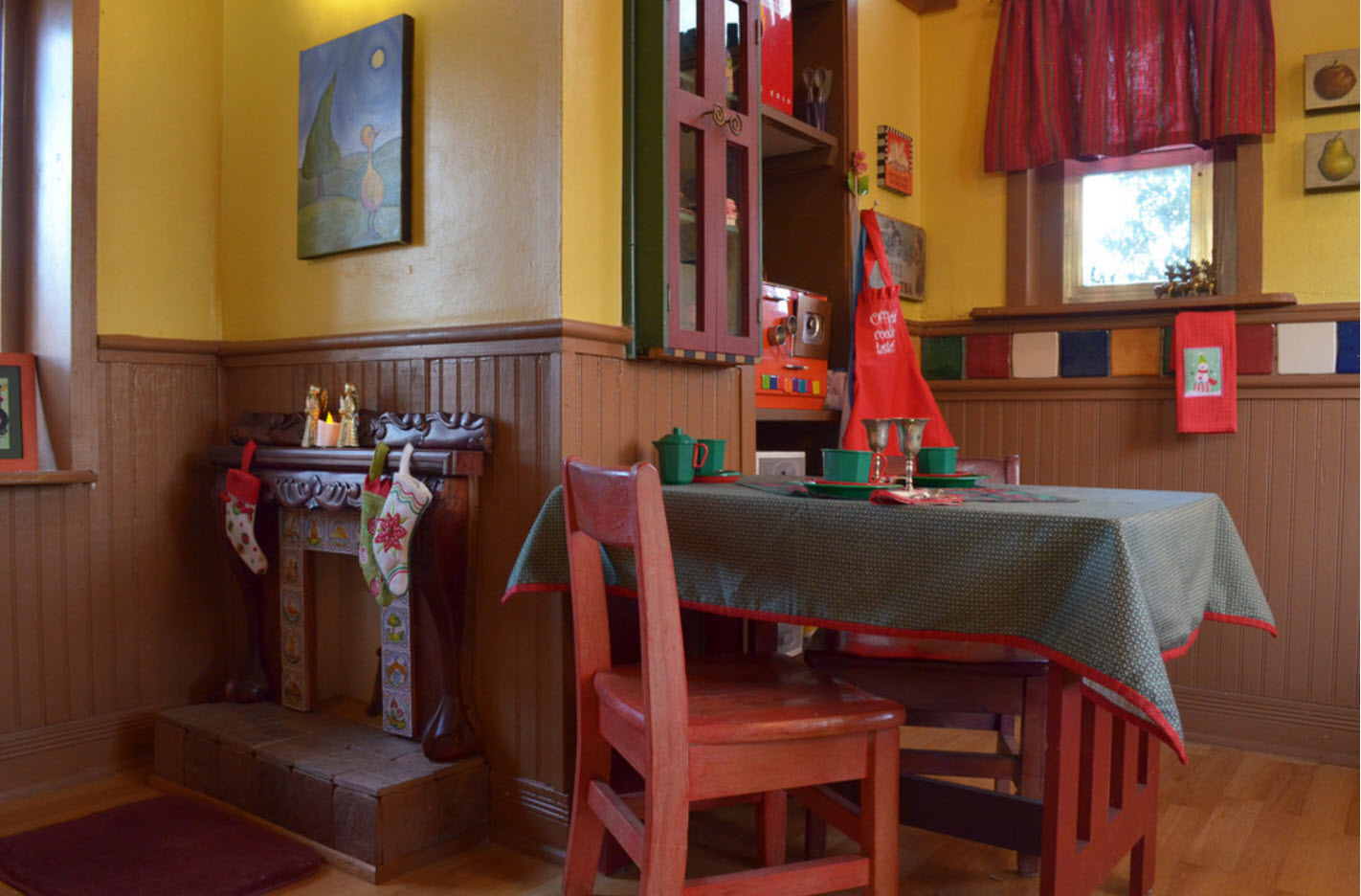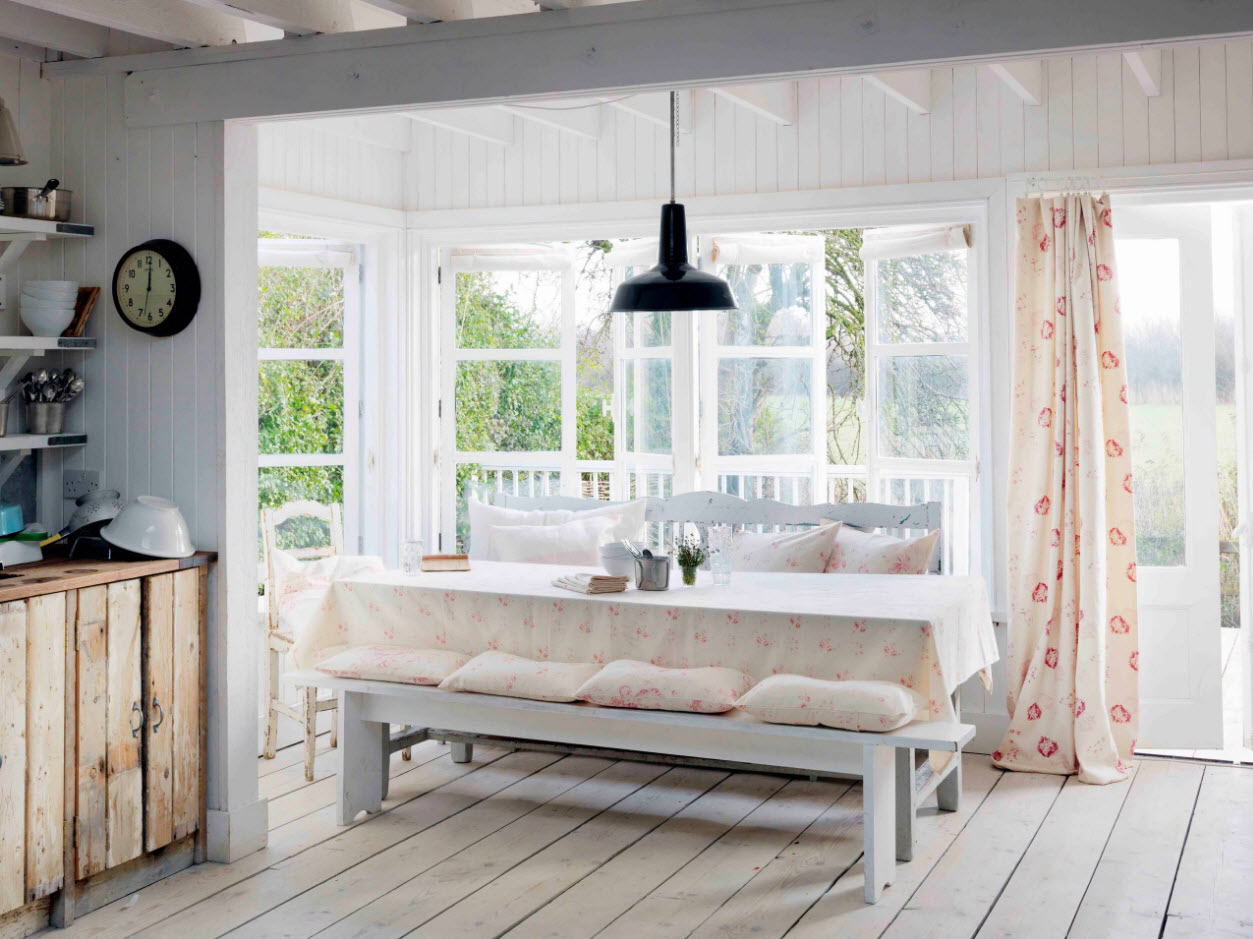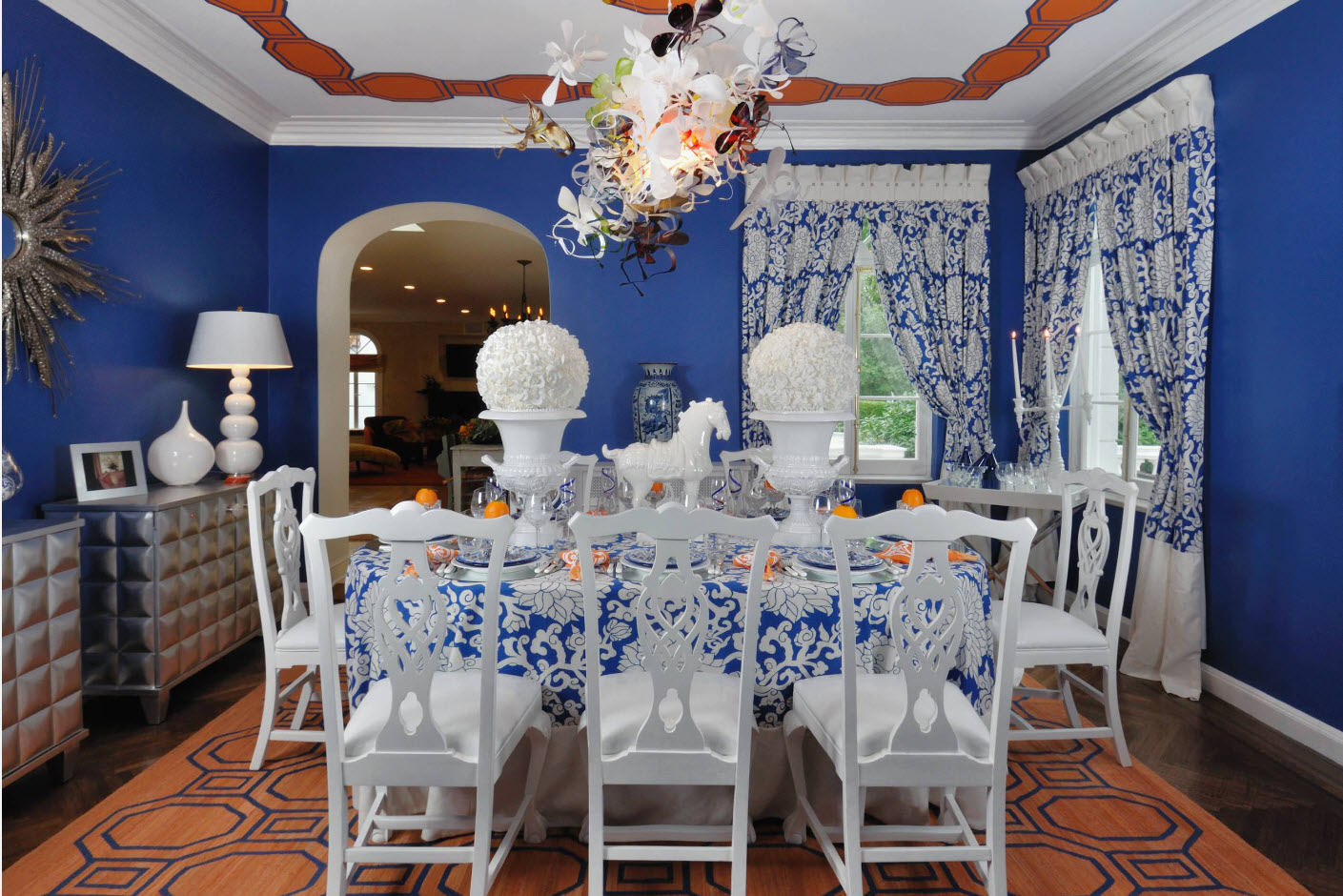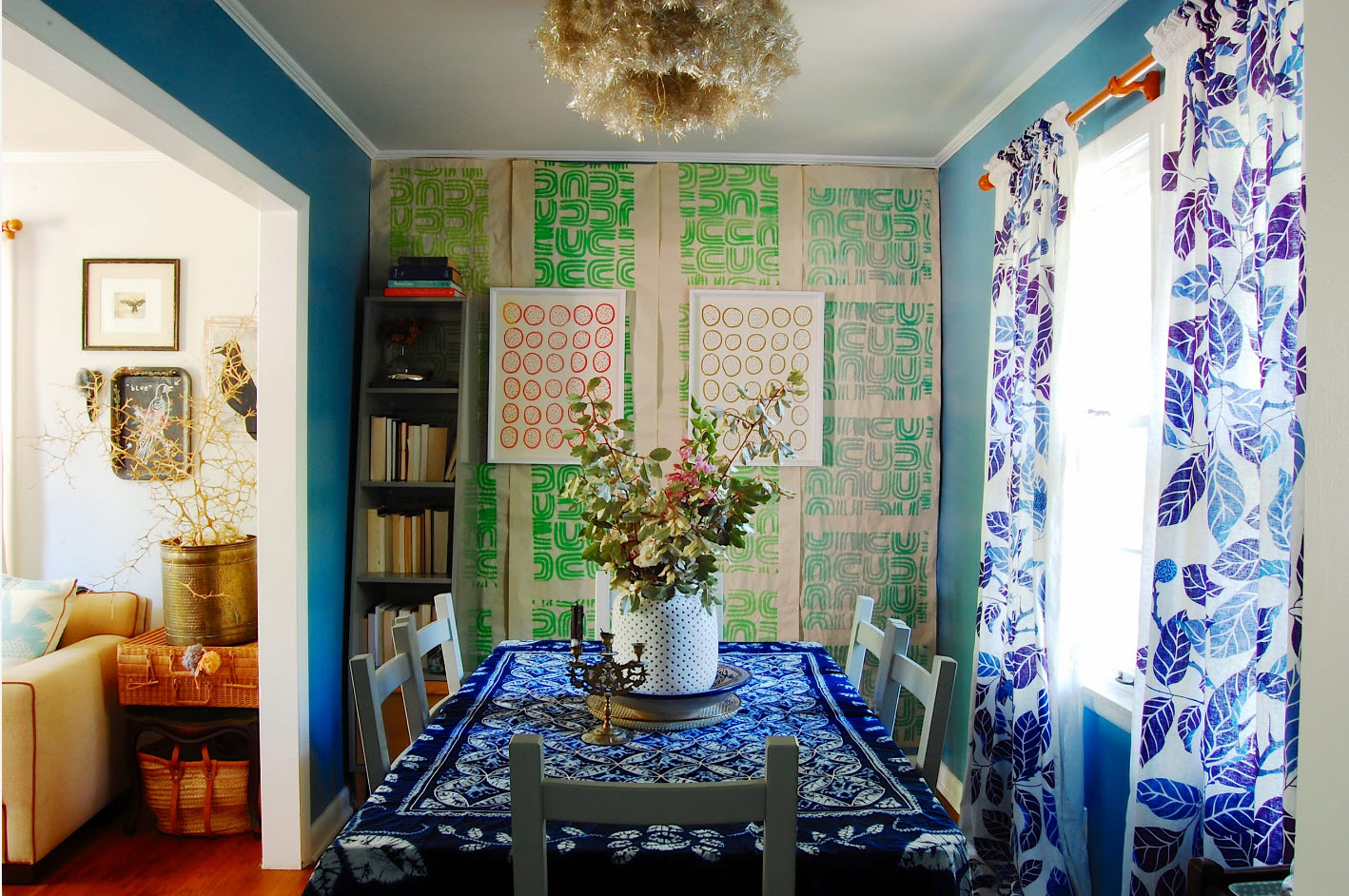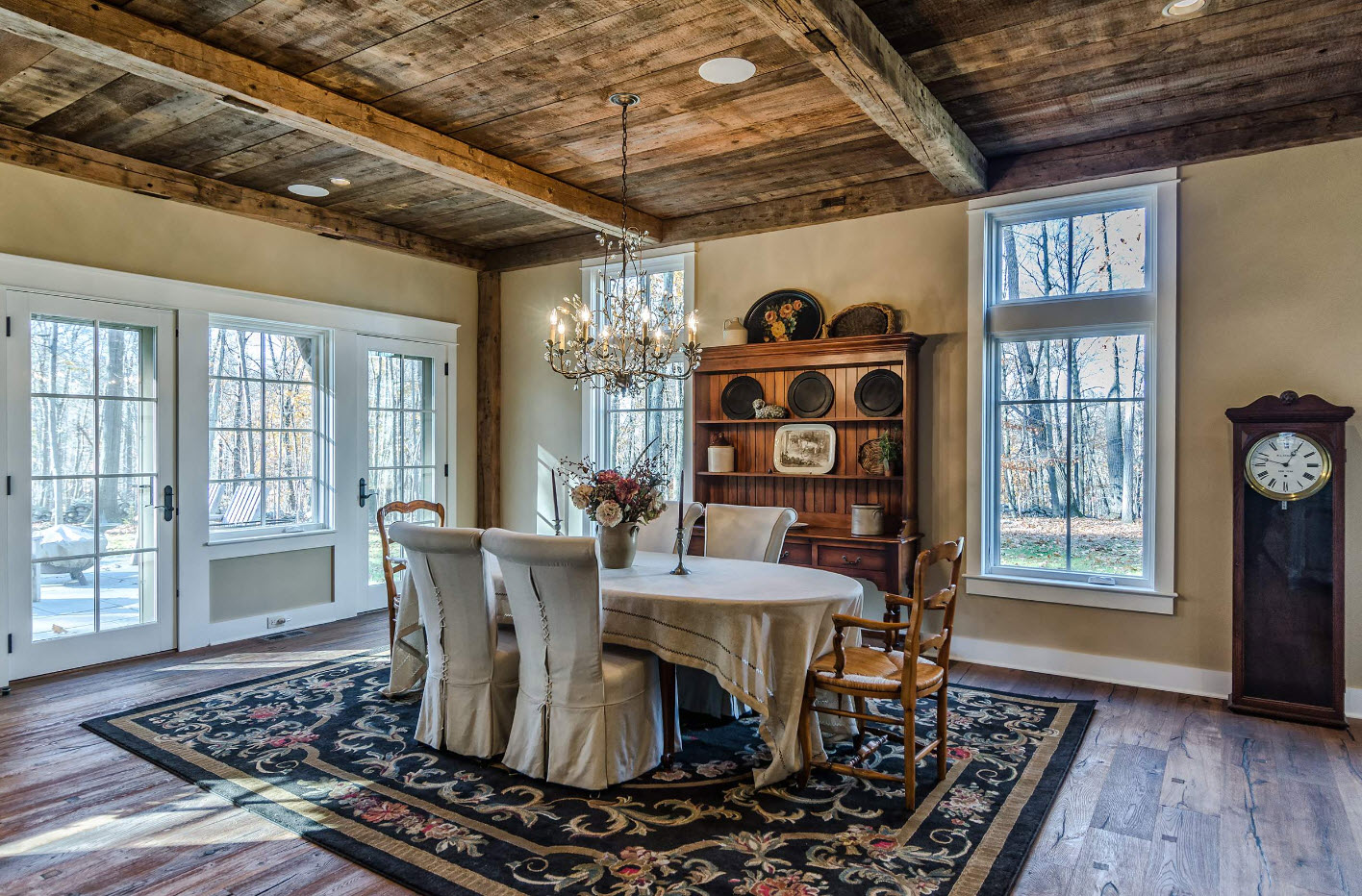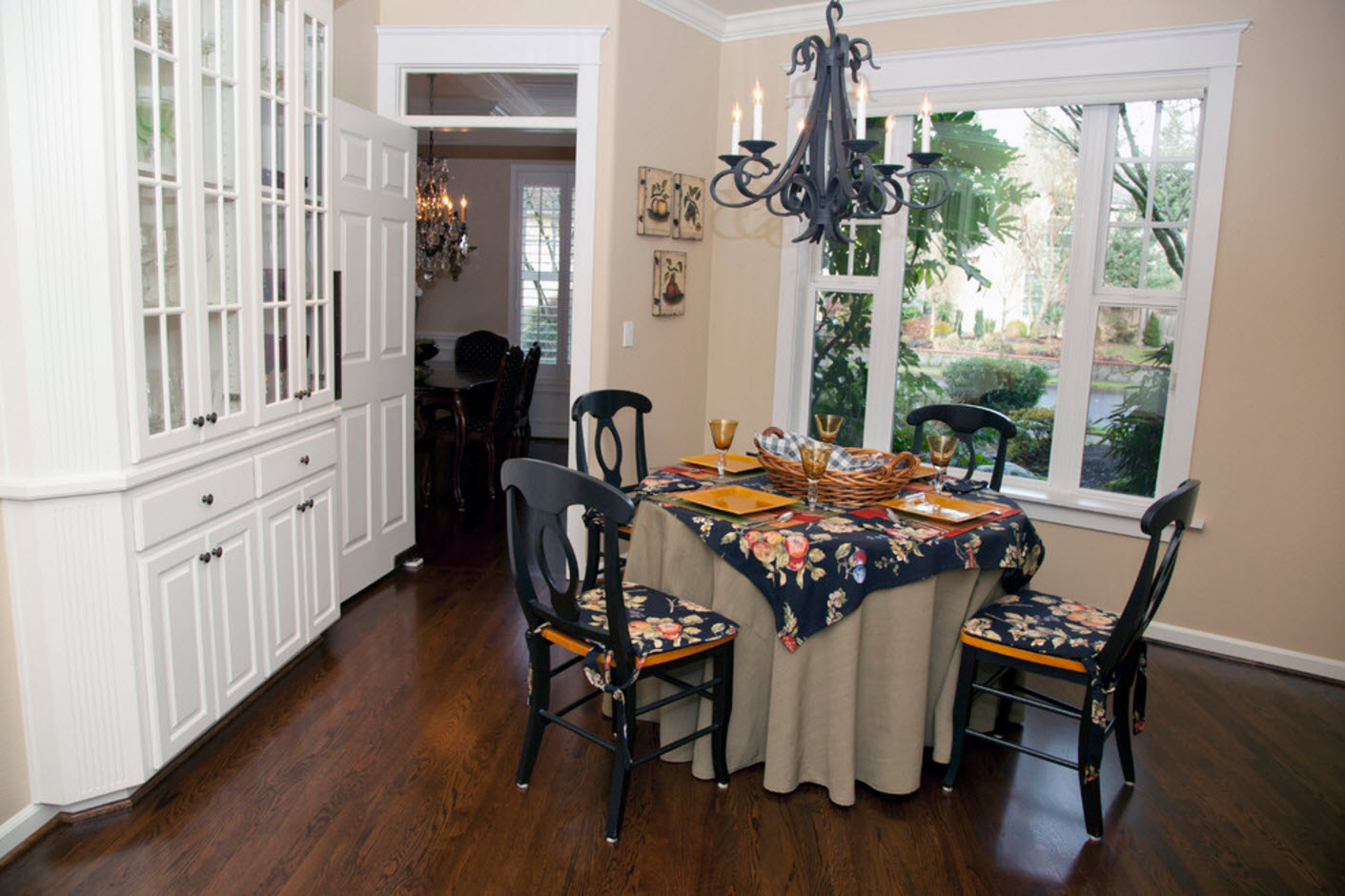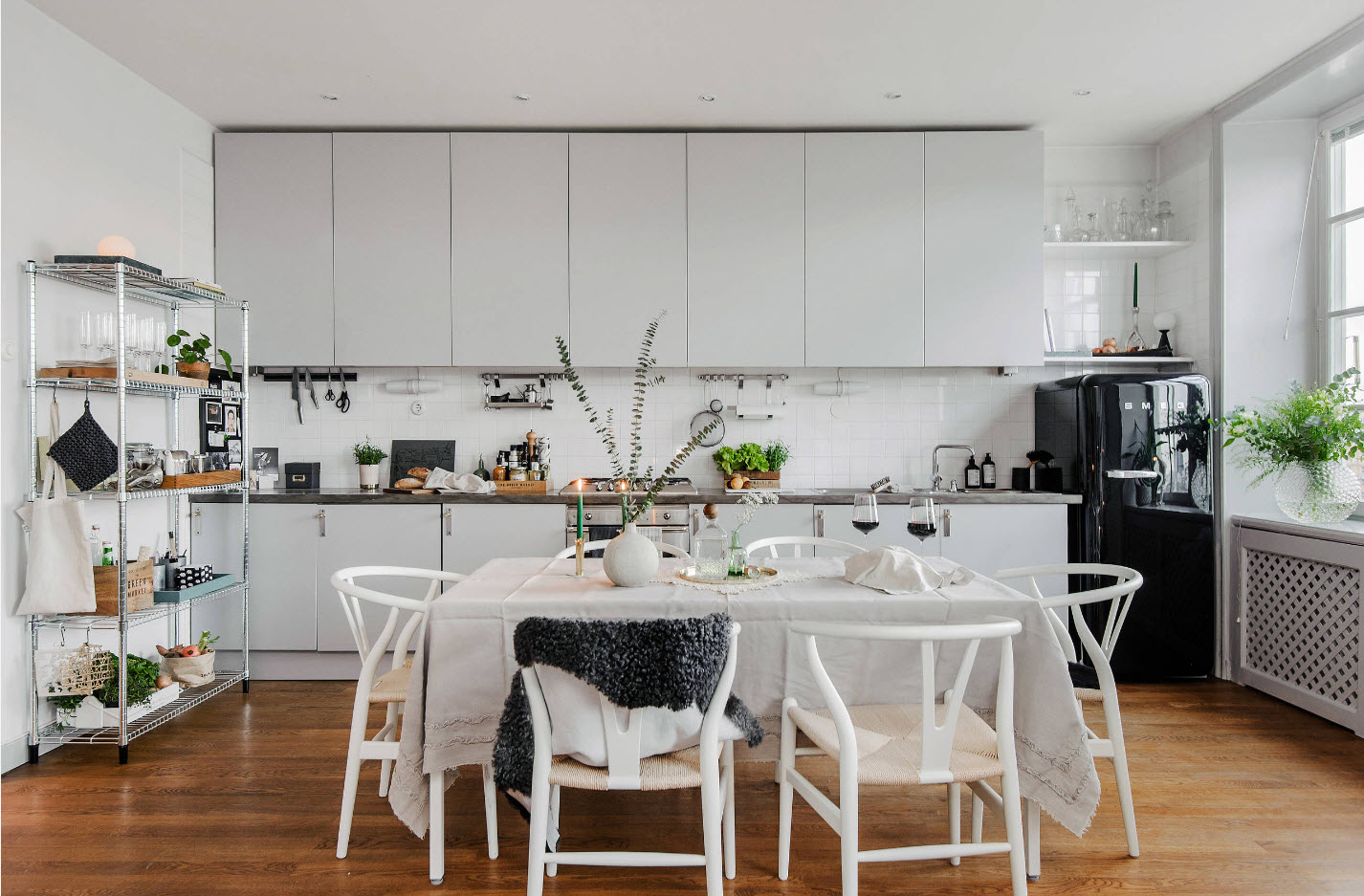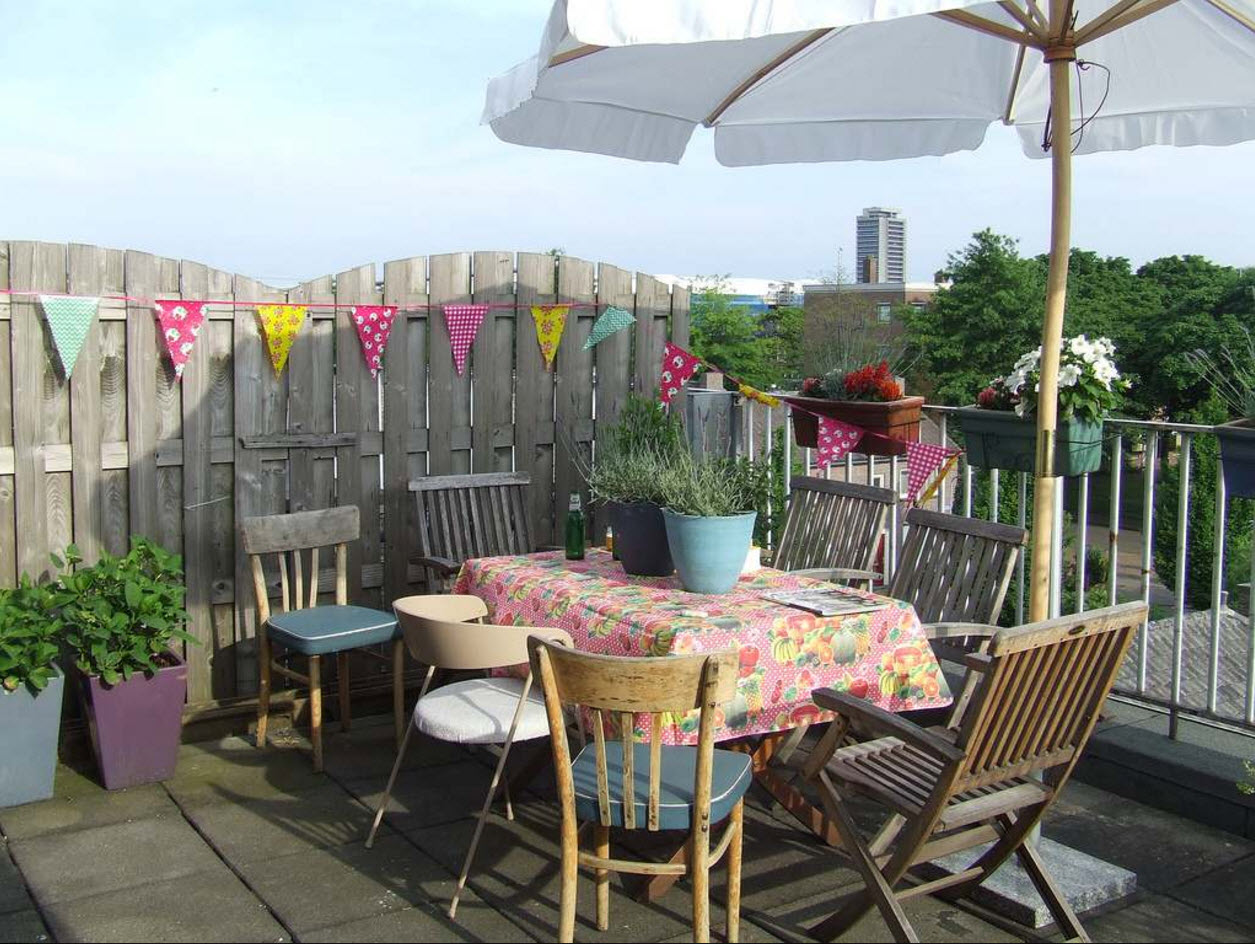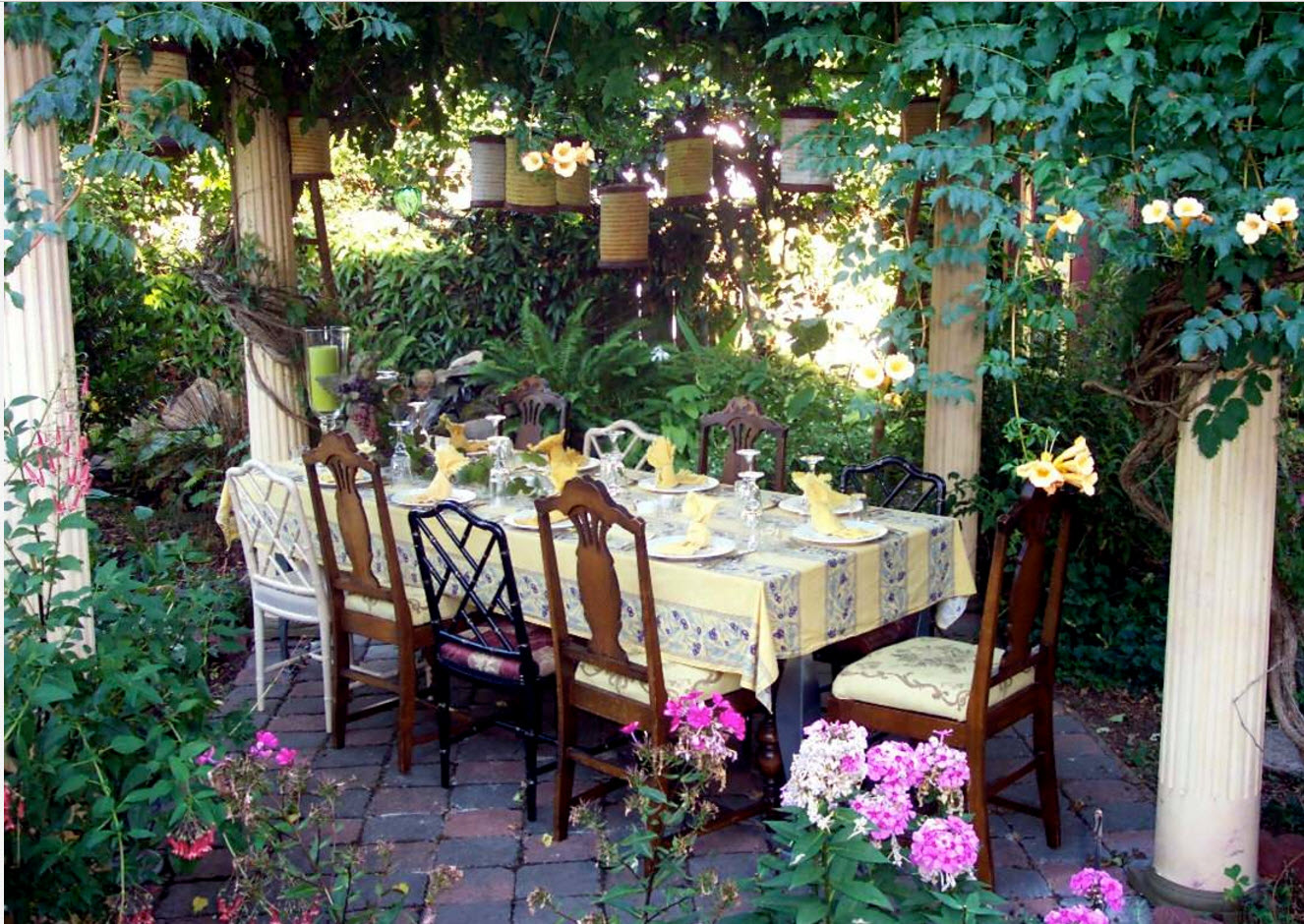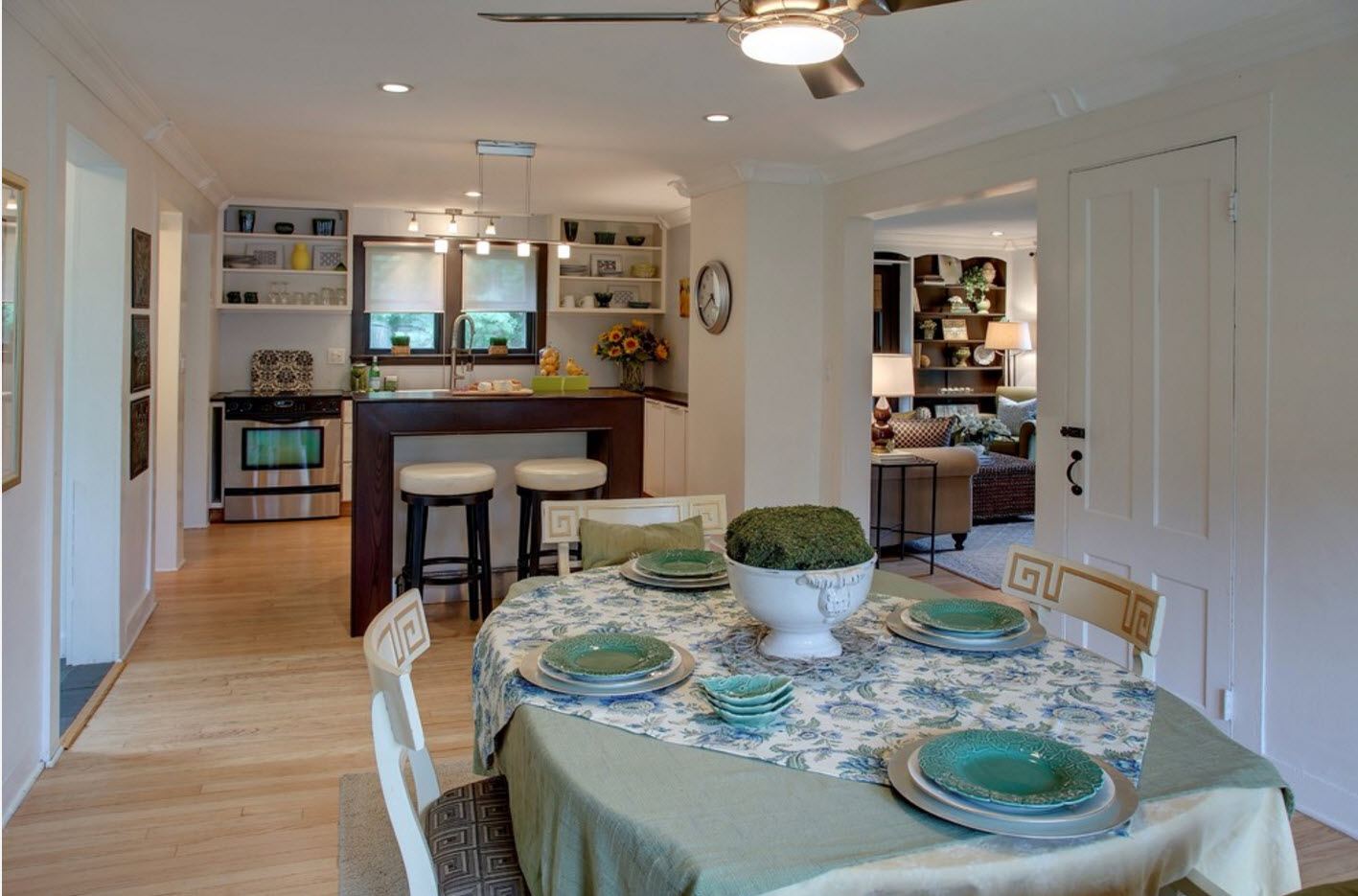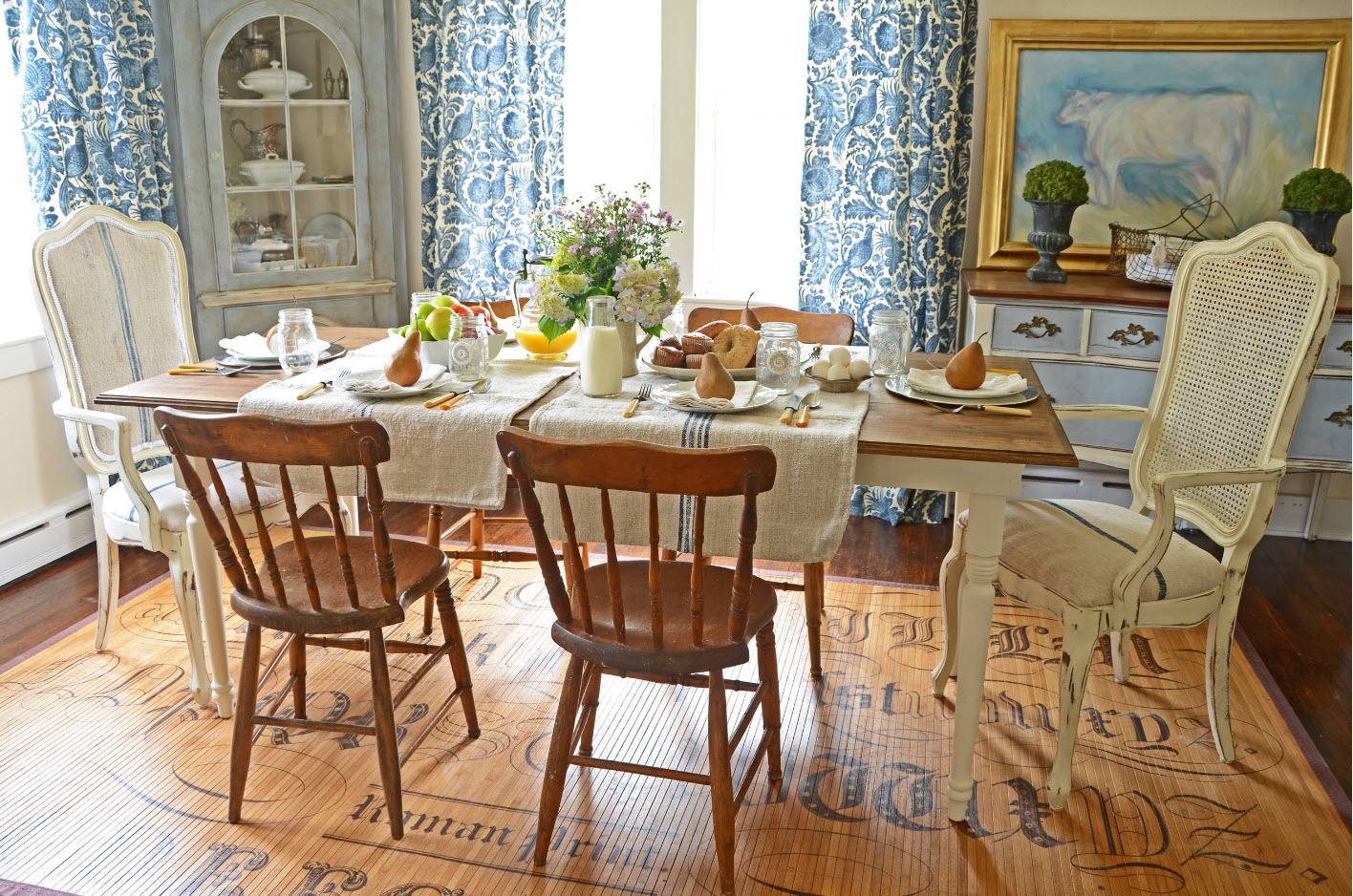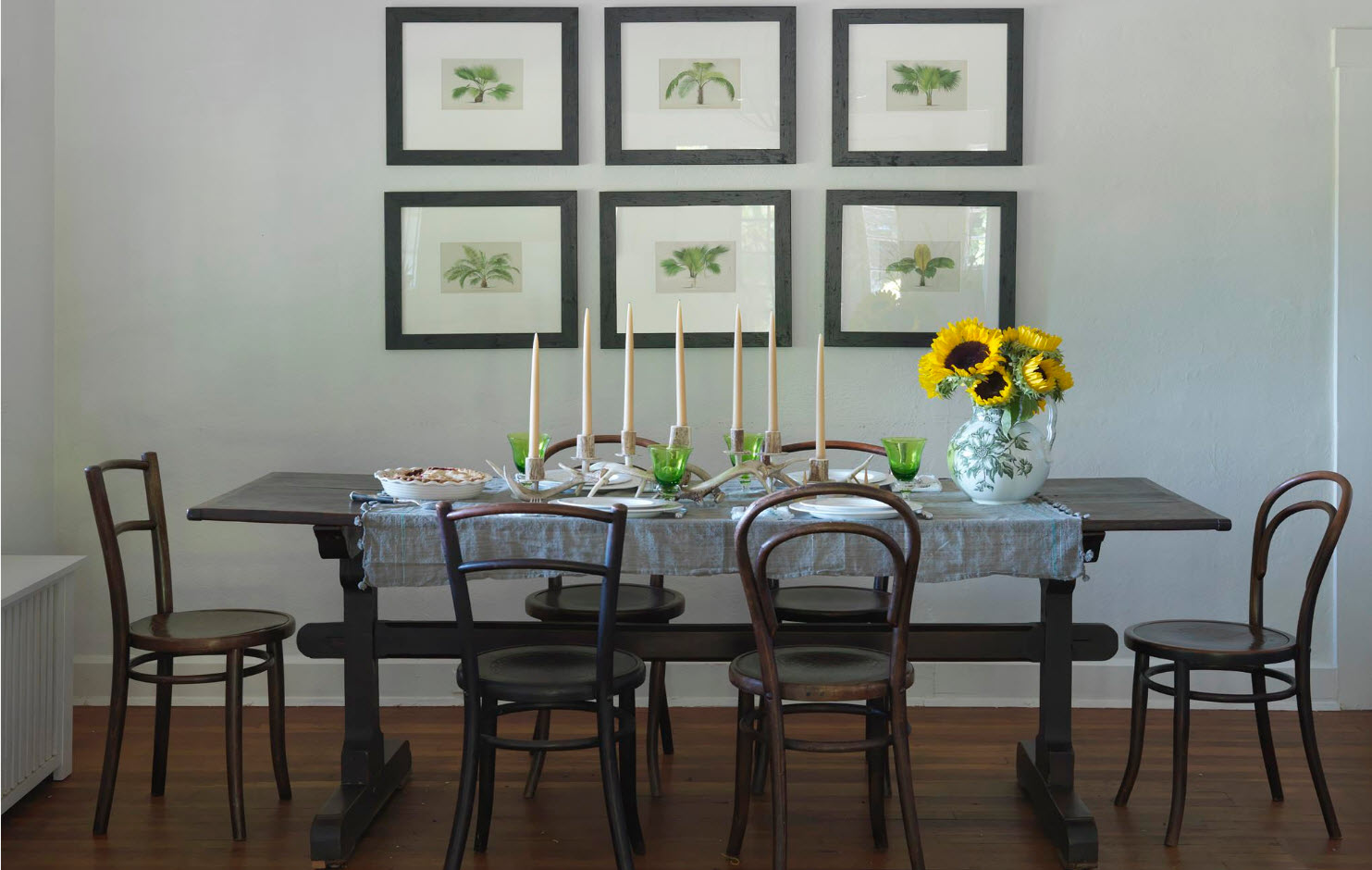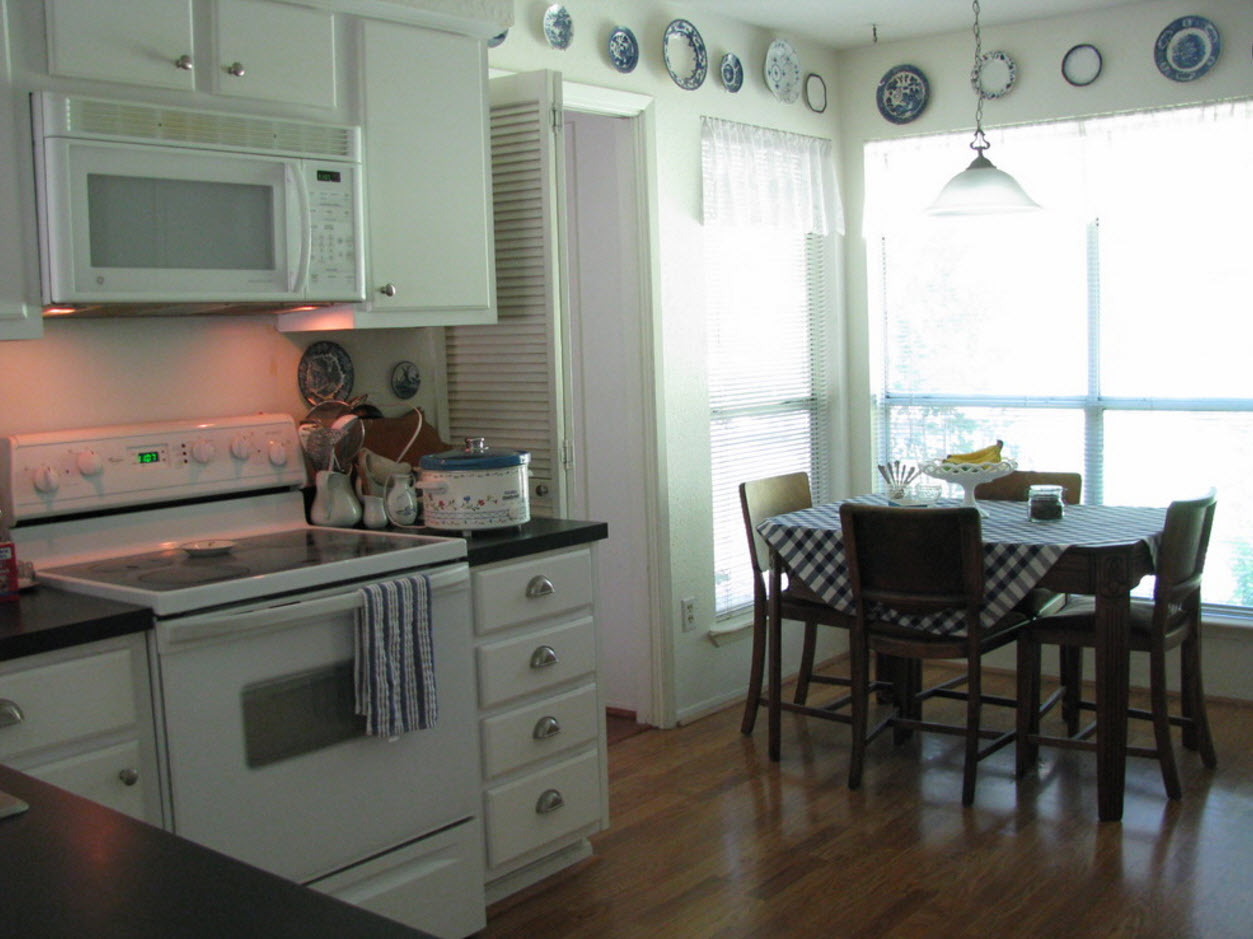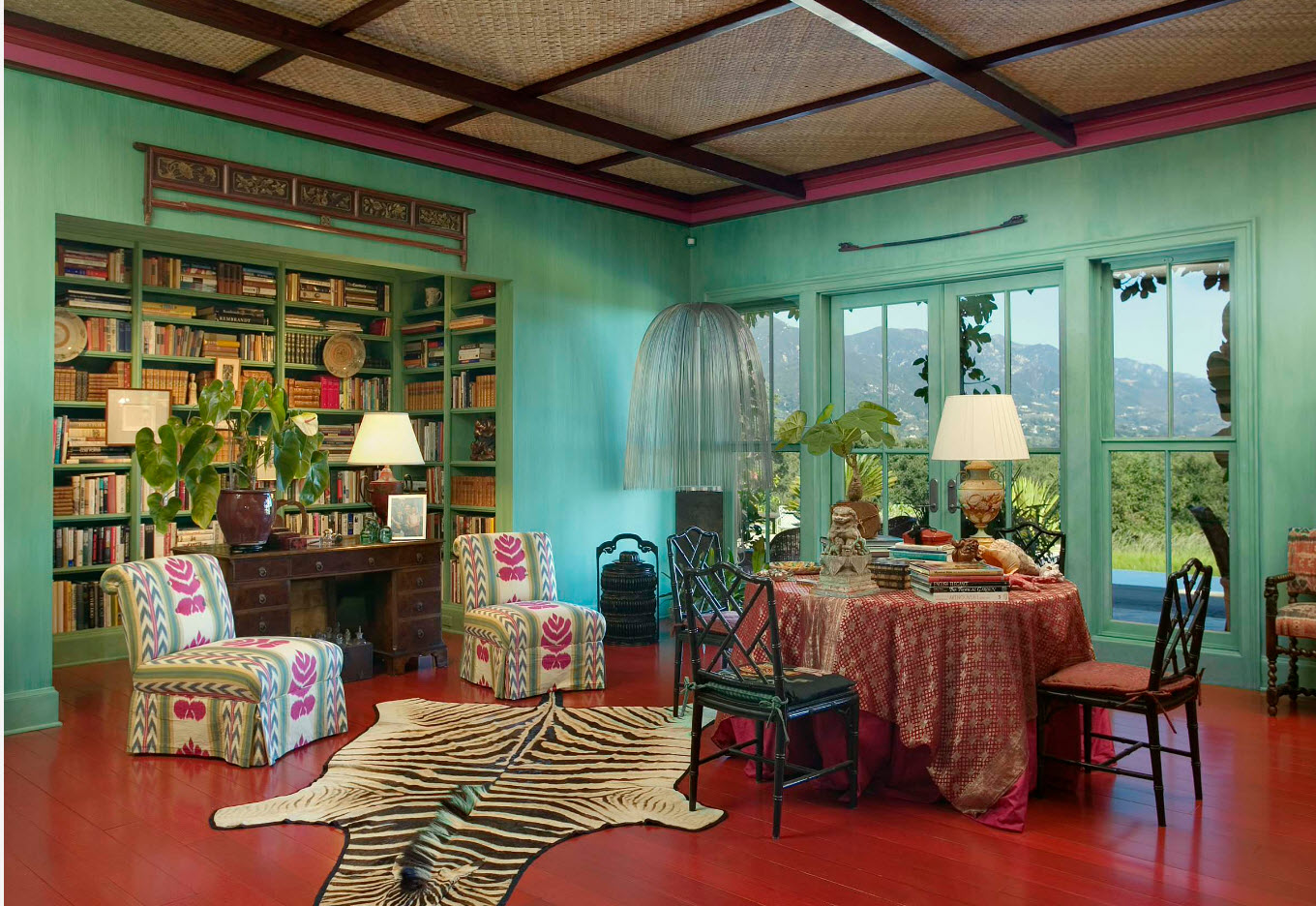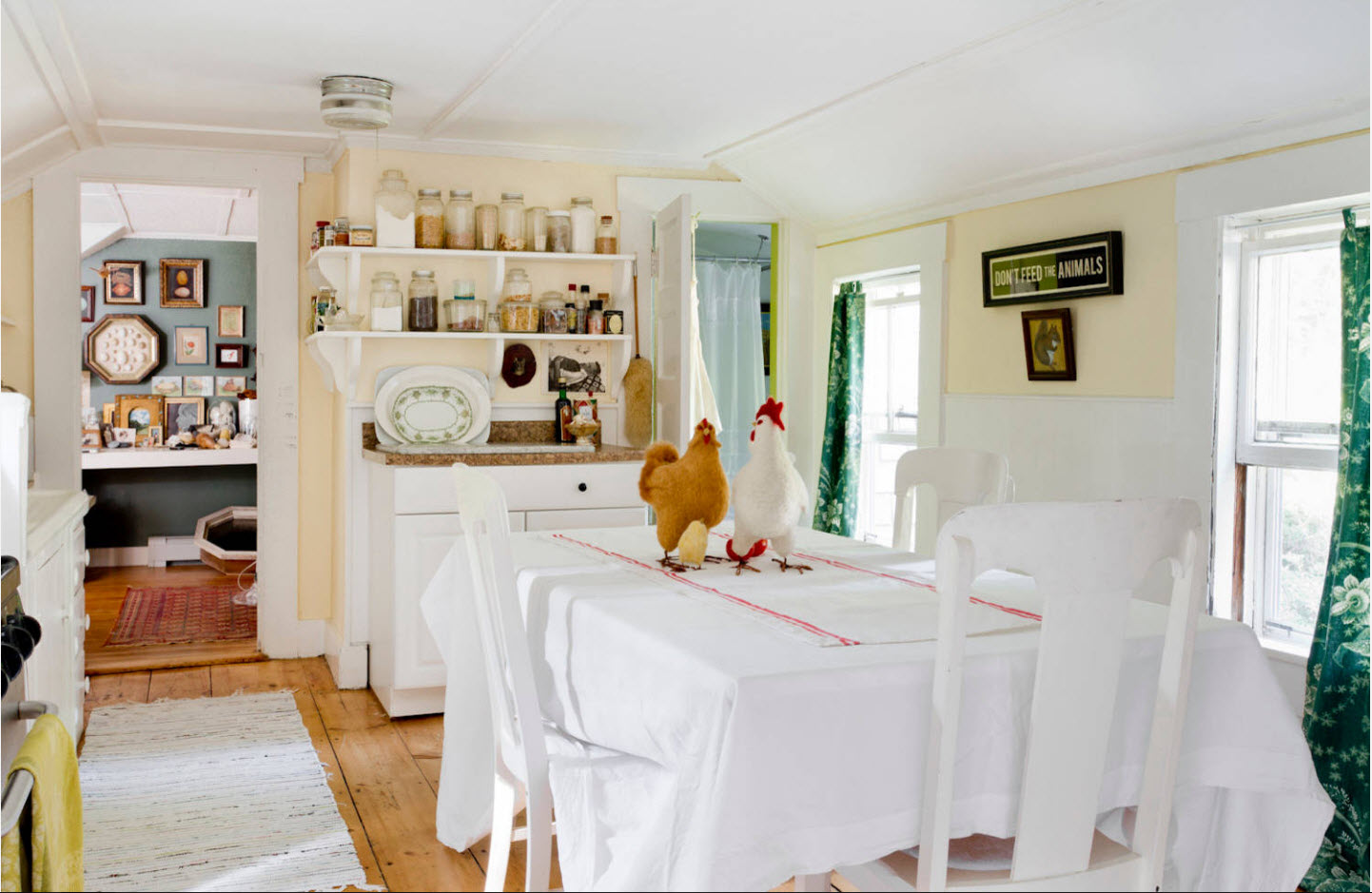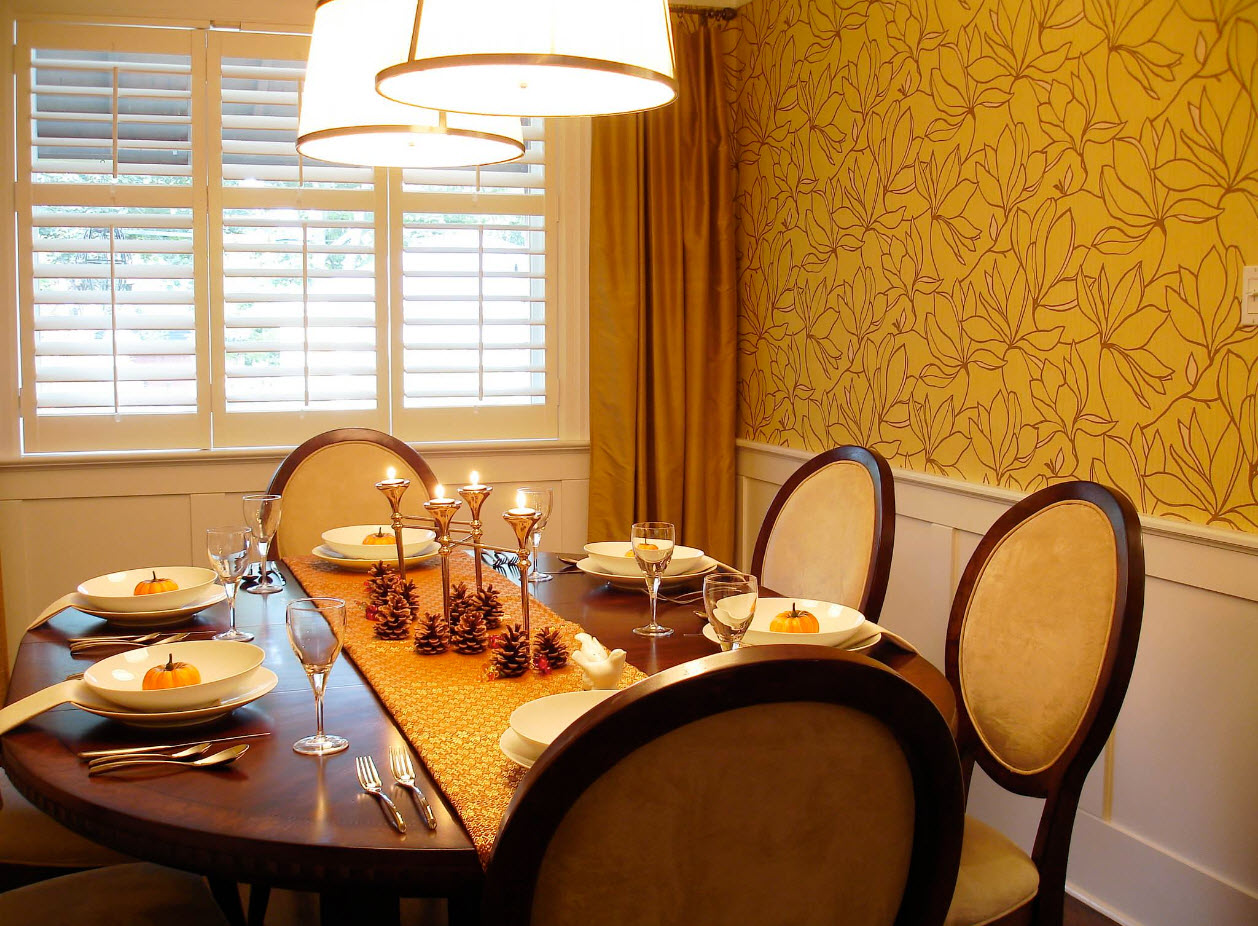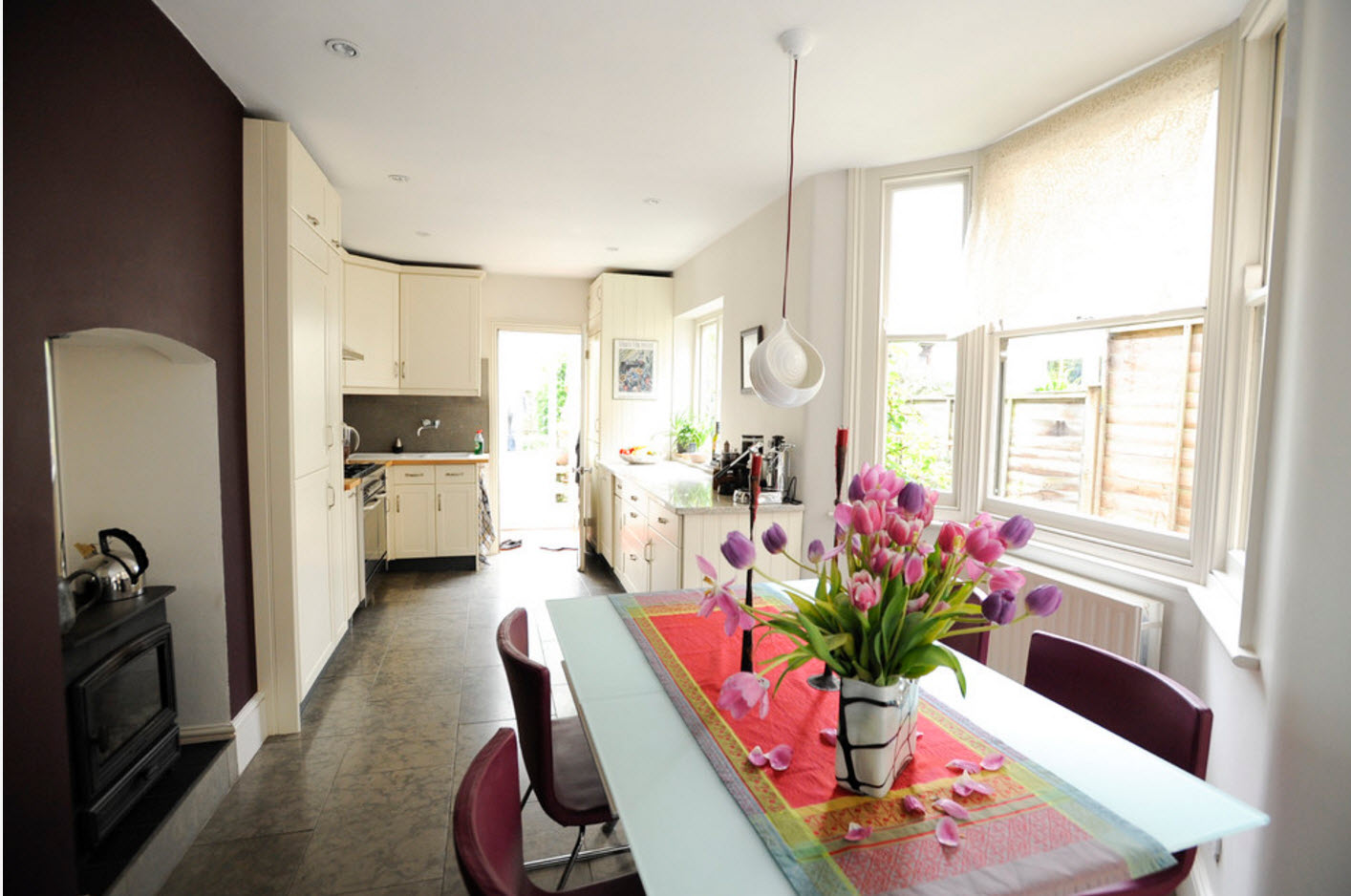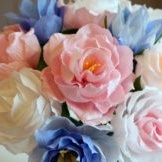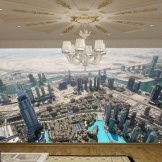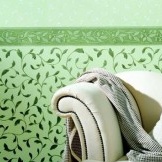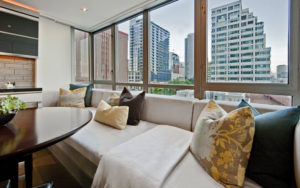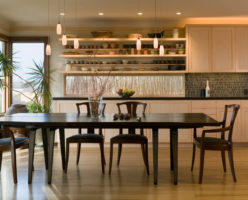Tablecloth in the interior: choose a beautiful and practical option
The choice of tablecloths is the final stage in the design of a kitchen or dining room interior. At first glance, the task seems simple - you just need to decide on the size, shape and color of the product. But you will be surprised how much one fabric cloth spread on the dining table can change the whole picture of the perception of the design of the room. Casual or festive, bright or neutral, smooth or with embroidery - a tablecloth always adds a touch of homeliness to the interior of the kitchen or dining room, brings that warmth that cannot be much in our home. We offer you the examples of real design projects to determine the criteria for choosing a tablecloth, which will not only serve the long term in your kitchen or dining room, but also decorate the interior with your presence.
Criteria for choosing a tablecloth for home use
It is not known for certain who first made the decision to spread a piece of cloth on the table, and for what purpose this, certainly, decisive stroke in shaping the serving history was accomplished. Several thousand years ago, someone might just need to cover up a stain or even a hole in the dining table, but this step was the starting point in creating the area of activity that is now of global importance for the design of living spaces. A tablecloth for dining and other types of tables is firmly in use. Modern manufacturers offer us the widest choice of a version of this textile product - in shape and size, choice of fabric and decor, color and print.
Before you go to the store or on the Internet in search of a tablecloth for the dining room or kitchen, you need to find out the answers to the following questions:
- in which room (or outdoors) will the tablecloth be used (kitchen, dining room, living room, porch, outdoor terrace or gazebo);
- the shape and size of the table for which it is necessary to purchase textile design;
- the purpose of the tablecloth (everyday, holiday, thematic);
- color palette of the room;
- the quality of the fabric, the presence or absence of decor, additional elements;
- limit budget (there are a large number of handmade tablecloths, the cost of which can be several times higher than the price of the entire dining group).
What are the tablecloths: shape, size, design
All tablecloths in form are divided into:
- round;
- oval;
- square;
- rectangular;
- asymmetric.
According to their purpose, tablecloths can be divided into dining, dining, banquet, tea (coffee) and interior. In this publication, we will consider mainly the types of tablecloths that are most popular among Russians - dining and dining.
By the intensity of use, all tablecloths are divided into everyday and holiday. In turn, festive tablecloths can be divided depending on the subject - New Year's, wedding, for children's parties, for romantic dinners.
Size selection
In order to choose the right size of the tablecloth, you need to measure the table for which it will be intended. For square tables we measure one side, for rectangular tables - length and width, for round tables - diameter, for oval tables - length and width, which will be equal to small and large diameter. It is necessary to add 30-40 cm to all sizes in order to get the so-called "overhang" or "drop" as a result.
Etiquette allows a “droop” size of at least 20 cm. It is believed that it is better to lay a long tablecloth than even a little short one.But from the point of view of safety and basic comfort, it is better not to allow the use of a tablecloth that extends to the floor with the edges - guests or household can simply step on the edge of the fabric, overturning the contents of the table.
Color scheme
The choice of tablecloths is the case when it cannot be said unequivocally that "a universal option does not exist." A white tablecloth can rightfully be considered just such a win-win option for a variety of occasions. Snow-white table decoration will be appropriate both on holidays and on weekdays. On a white background, dishes of any color will look advantageous, you can use sets with a colorful, bright pattern and not be afraid of creating a lurid image.
A lacy snow-white tablecloth looks great on the surface of a dark wood table. Contrast allows you to highlight the drawings and ornaments of the product, emphasize the craftsmanship of handicrafts.
No less popular are tablecloths with prints in a tapestry and stripes. It can be a cell or stripes in pastel colors, discreet, not attracting attention or bright, accent, able to become the center of attraction of all looks - it all depends on the color palette of the interior and the chosen solutions for furnishing the dining group.
As for the use of a tablecloth with a motley or large pattern, here experts recommend using a rule that is actively applied when choosing curtains. If the wall decoration and furniture are designed in the same color schemes, then the large print of the fabric will become an accent. If the interior of the room is replete with color combinations, then for textiles it is better to dwell on calm, neutral shades.
Using a tablecloth as an accent element is a fairly often used design technique. Its simplicity and versatility allow owners, without using the services of designers, to change the nature and mood of their kitchen or dining interior. If the room is decorated in neutral colors, a bright tablecloth will dictate the level of originality, color temperature and even the emotional mood of the interior.
When choosing the color of the festive tablecloth, you need to rely on the theme of the celebration. For example, a tablecloth of green, red, golden and silver color is perfect for a New Year's table. It will not be difficult to pick up dishes and accessories against such a background; silverware will shine on a green or red background.
One of the options for choosing fabric for the execution of the tablecloth is a combination with curtain textiles. Obviously, the image of the room as a result turns out to be harmonious, integral. But it is important not to overdo it with the use of bright colors and colorful ornaments. If both the curtains and the tablecloth are executed in fabrics with a bright, large pattern, the room will appear smaller than its size and look too colorful.
Another way to choose fabric for a tablecloth is to combine with upholstery in seats and backs or chair covers. Customization involves a greater amount of time and money spent on the preparation of the textile design of the dining group. But the result will be worth it - a harmonious, balanced image of the dining table with chairs in the same color style will be a reward for effort and expense.
The choice of material for the tablecloth
Cotton and linen are considered traditional materials for the manufacture of kitchen and tablecloths. Cotton fabrics are pleasant to the touch, dishes do not slip on their surface and it is easy to care for them (it is only important to remember that the natural material shrinks when washing). Even the simplest cotton tablecloth in starched form looks very festive, elegant.
Tablecloths made of linen have a nice non-slip surface, they are practical and hygienic, keep their shape well. The disadvantage of linen products can be called their rather high cost. Most often, natural linen is used in unpainted form, thereby introducing notes of natural warmth, comfort and coziness into the interior of the kitchen or dining room.
For a tablecloth that will be used outdoors, it is better to prefer a more practical option. Fabrics with artificial impurities are easier to wash and for a long time they are able to maintain their original appearance.
Serving accessories or tablecloth alternative
For some cases, in addition to the tablecloth, the dining table can be decorated with various additions. For example, naperon - a small tablecloth that spreads over the main table (and in some cases instead) will help to create a truly festive look for the table for meals. Designers recommend using layering to create a serving that will look not only solemn, but also modern.
In modern design projects of dining rooms and kitchen spaces, one can often find tables laid only with naperon. It is impossible to call such a design festive, but you cannot refuse such an ensemble in originality. Complementing the box with original personal napkins or rugs for plates, you can create a creative version of the table design for either an ordinary family dinner or a dinner party.
There are two ways to position naperon on the table: at the corner or around the perimeter of the countertop. For tables of a square shape, they often use naperon, which is similar in configuration, placing it around the perimeter of the table. But if you need to get an original image, then you can use two naperon located on the corners of a rectangular table from its corners. A square naperon will look no less organic on a round table.
Modern etiquette allows the use of a runner, slider or track instead of a tablecloth or in addition to it. So called a narrow strip of fabric, which usually spreads along the table on top of the main tablecloth. But you can use several tracks (as a rule, the number is equal to the number of seats occupied along the length of the table), which are parallel to each other across the table. It is on these runners that plates are installed and glasses, glasses, cutlery are located.
The combination of two runners of different widths, located one on one, looks originally. In this case, the canvas can be made of one fabric, but the top layer will have a pattern, embroidery, lace or any other decor. You can also experiment with color schemes, choosing original combinations.
You can use various storage systems to store tablecloths. Many people prefer to place tablecloths along with bedding in a linen closet located in the bedroom. But you must admit that it is much more convenient to store kitchen textiles in the very room for which it is intended. The smallest number of folds of cloth can be achieved when stored on special tripods on the basis of equipping cabinets for trousers.

